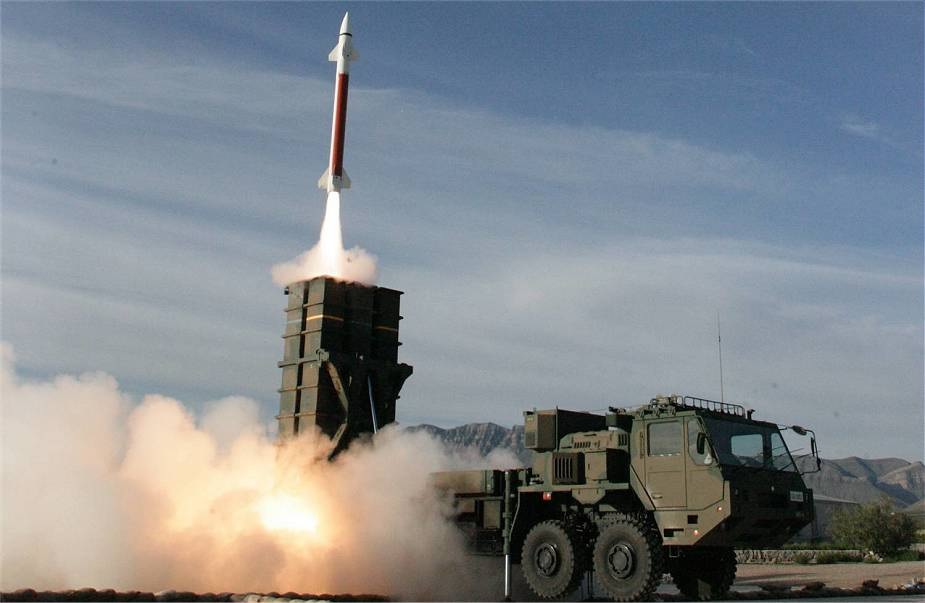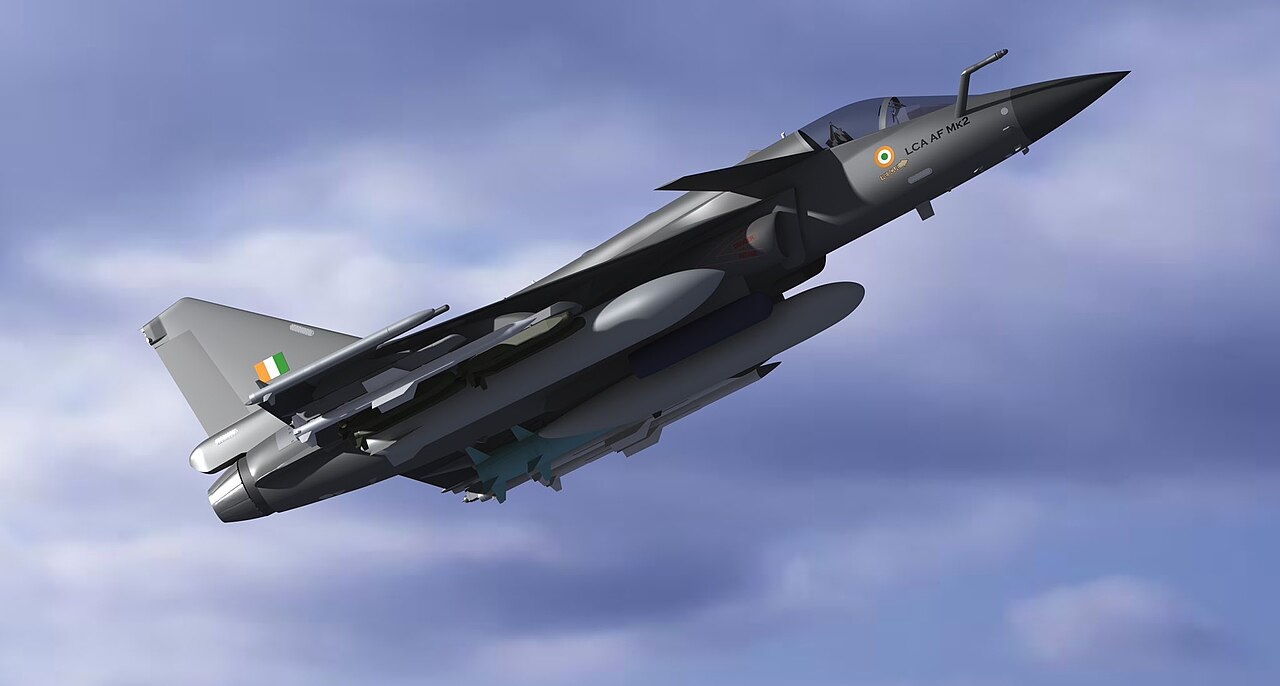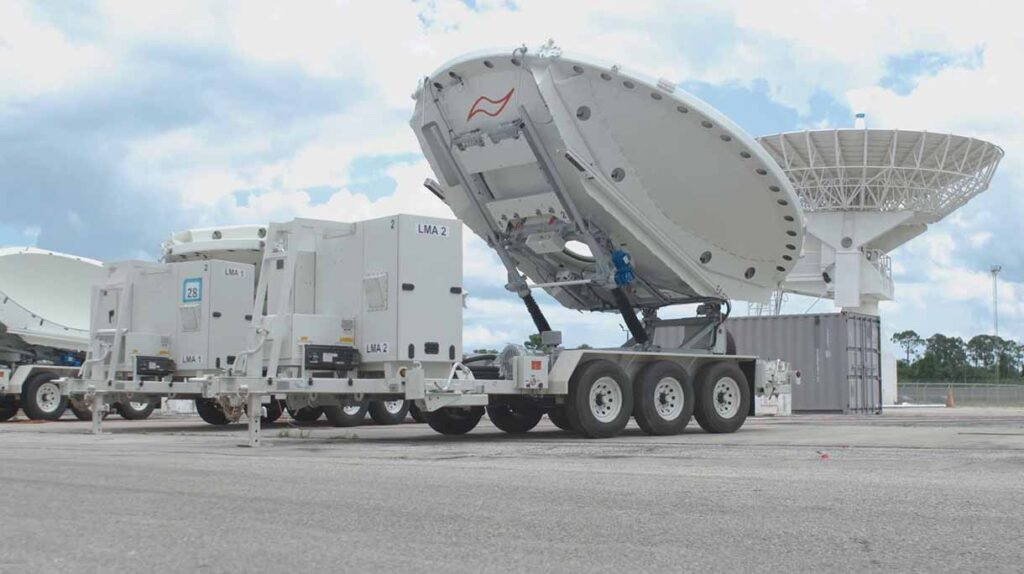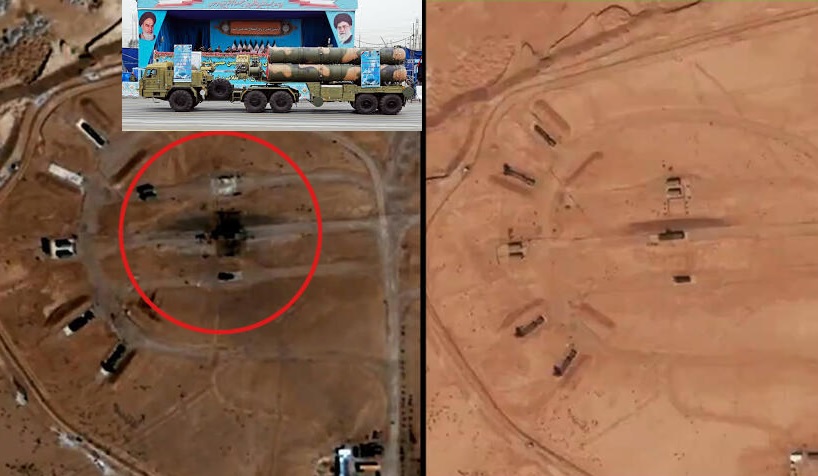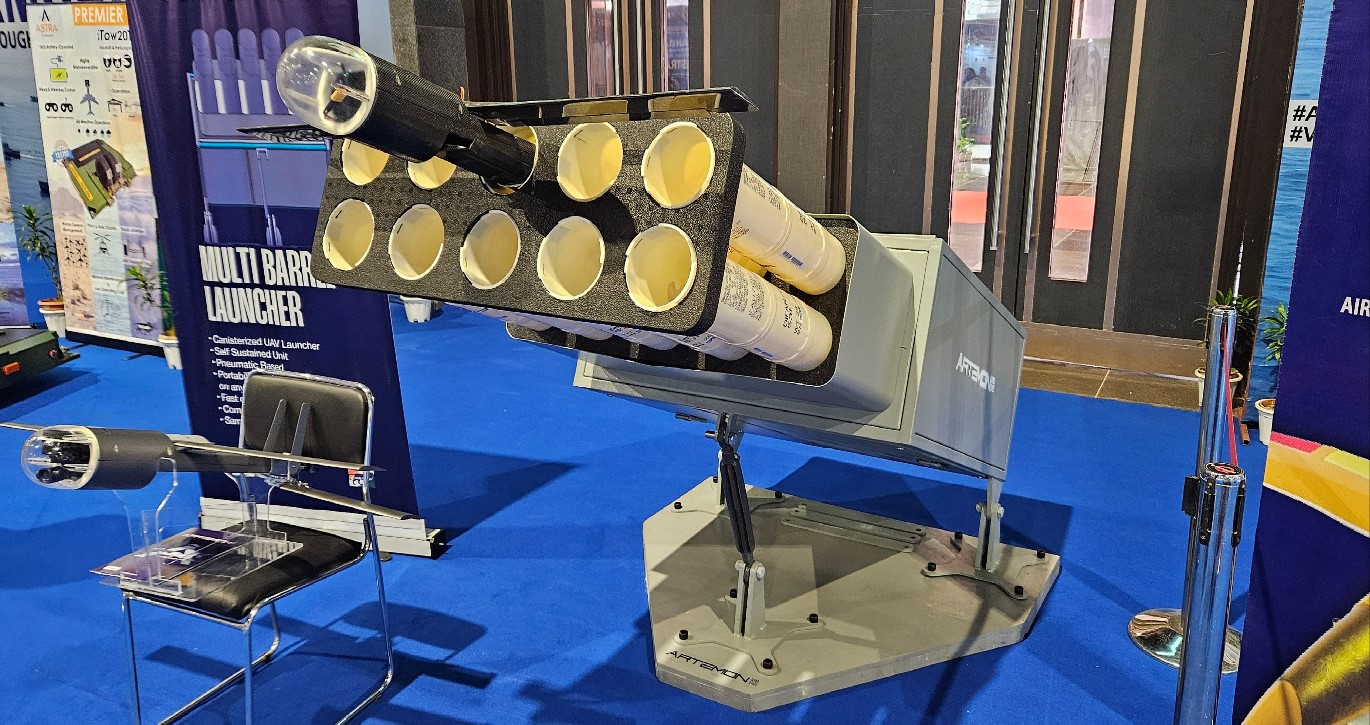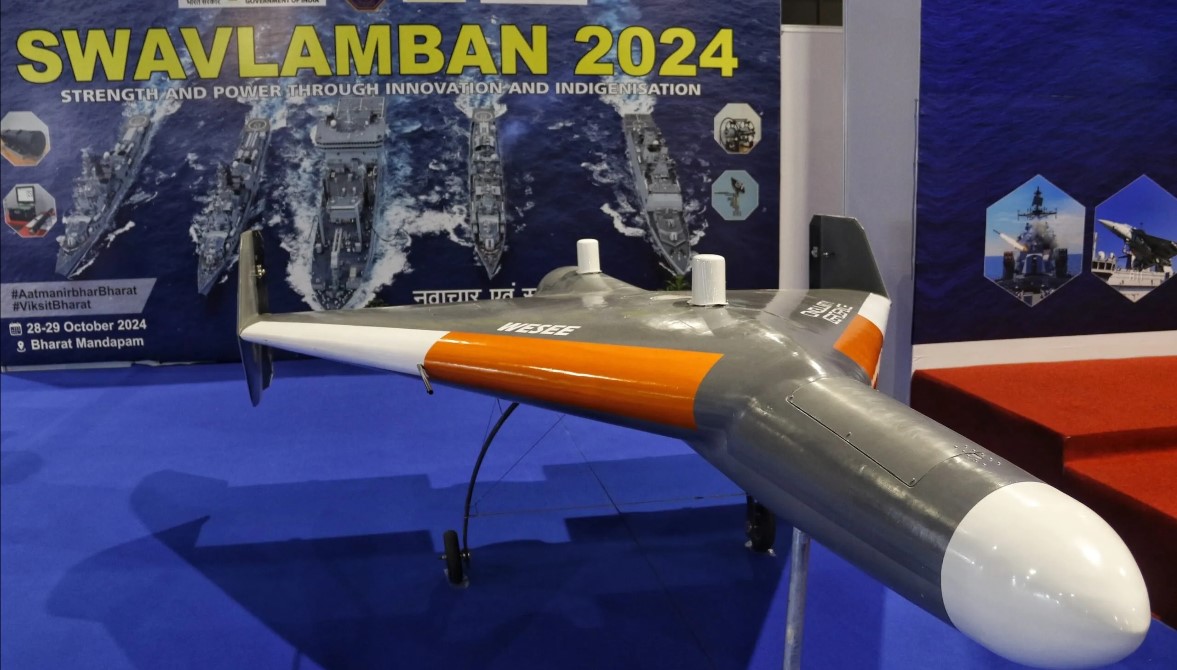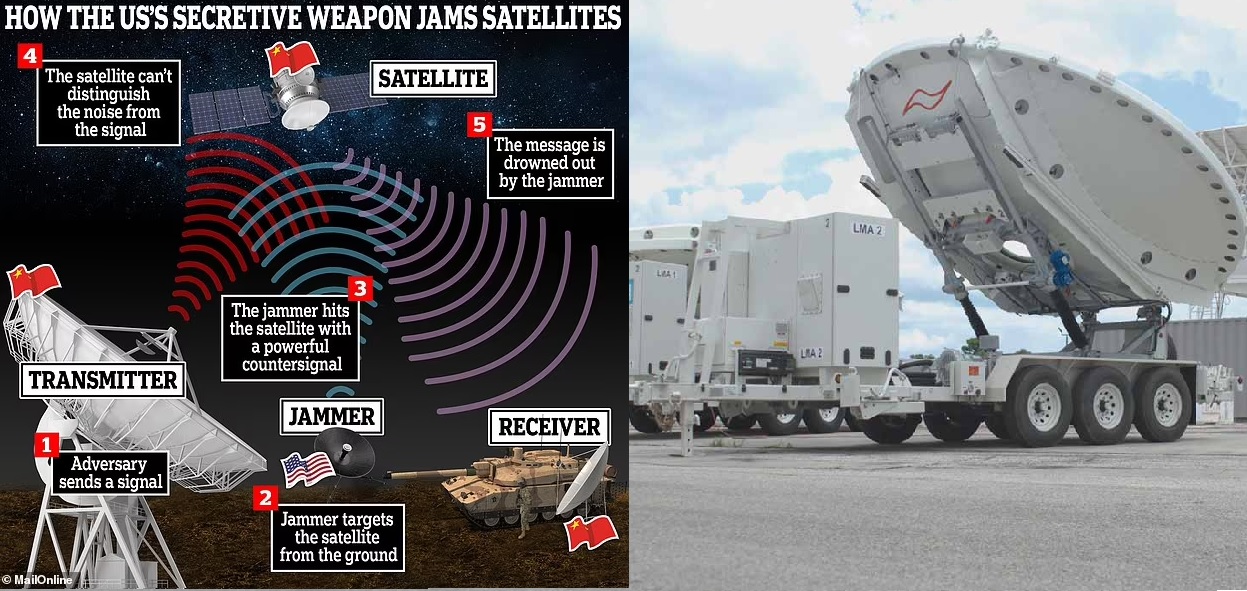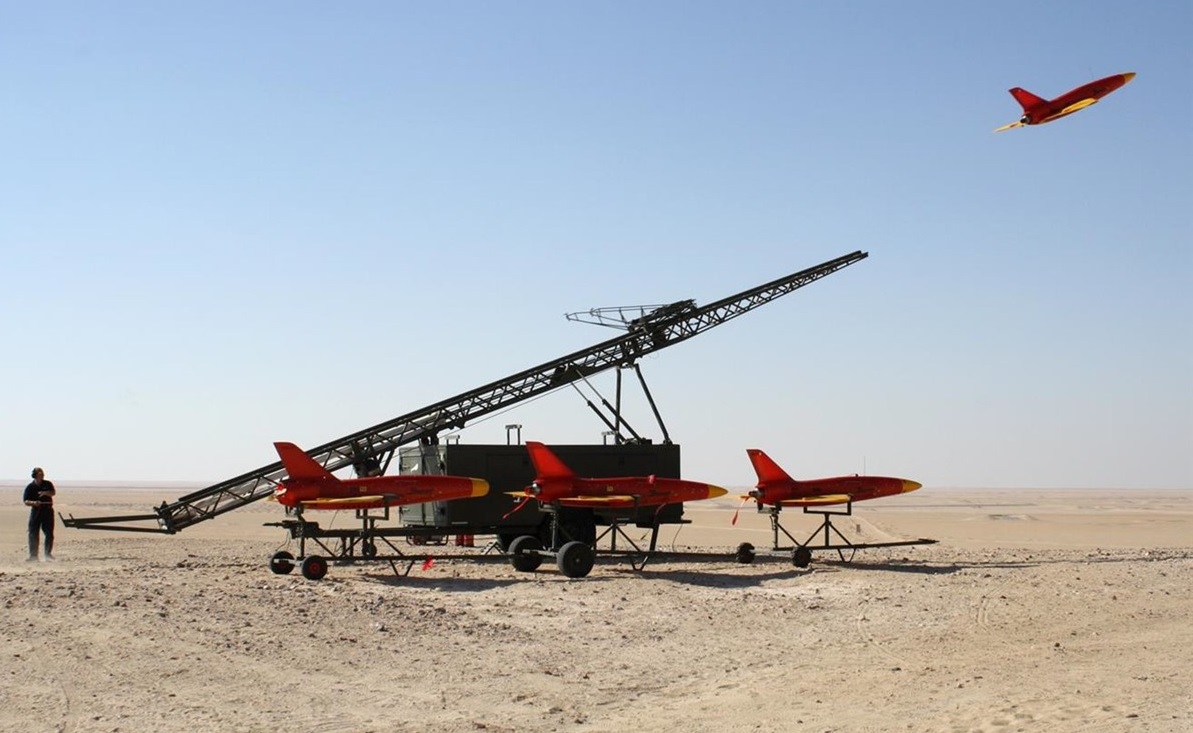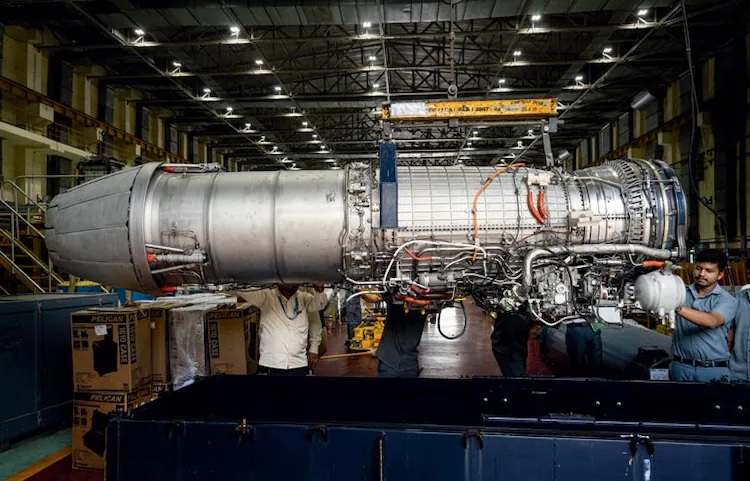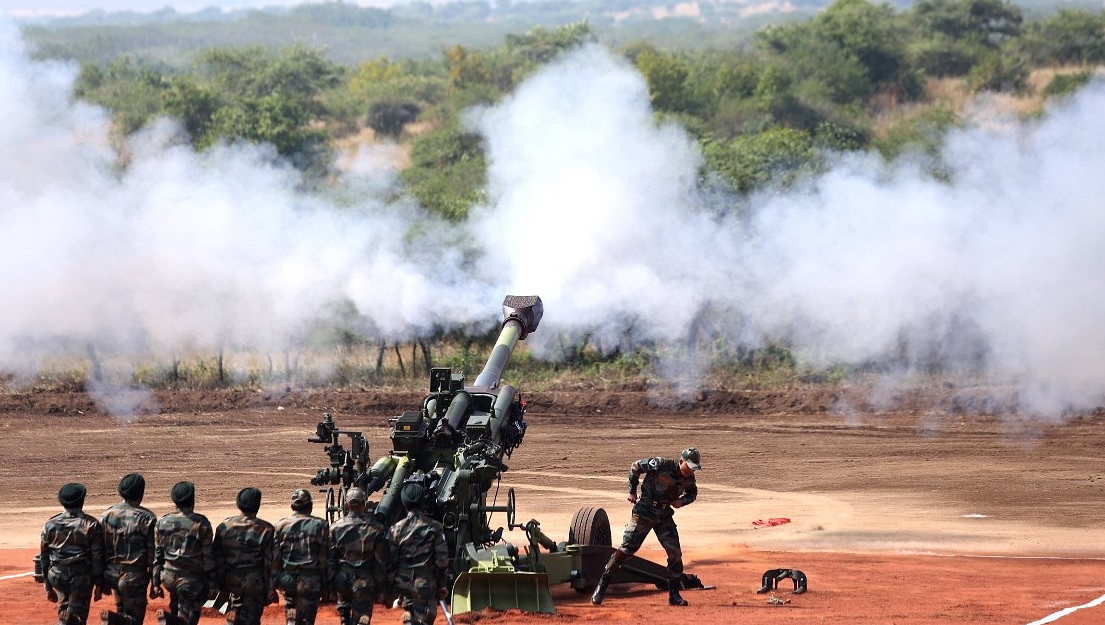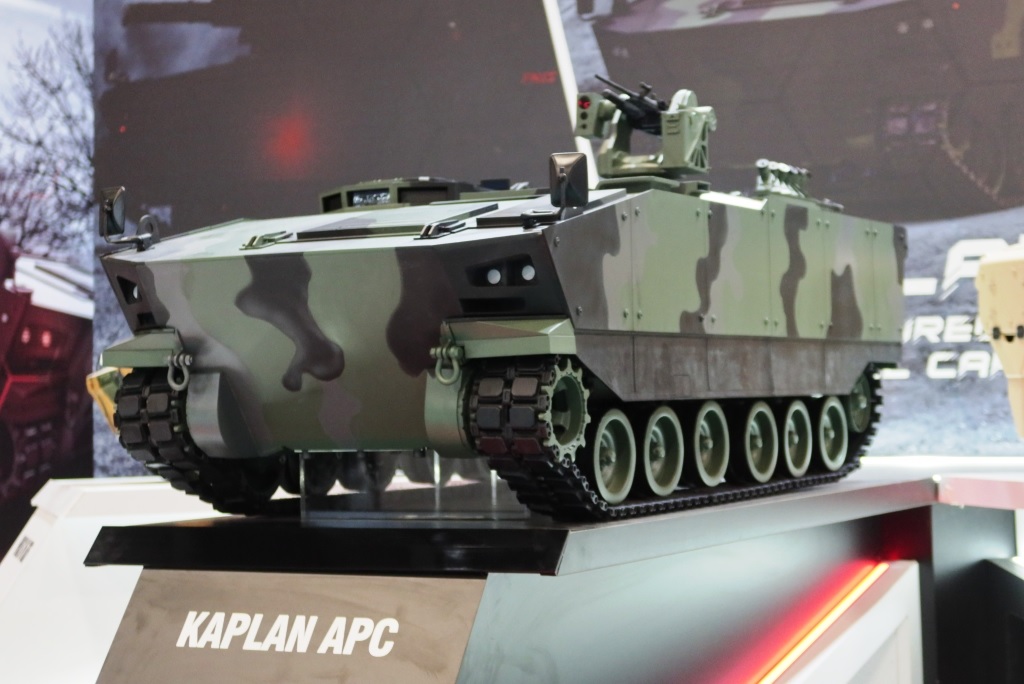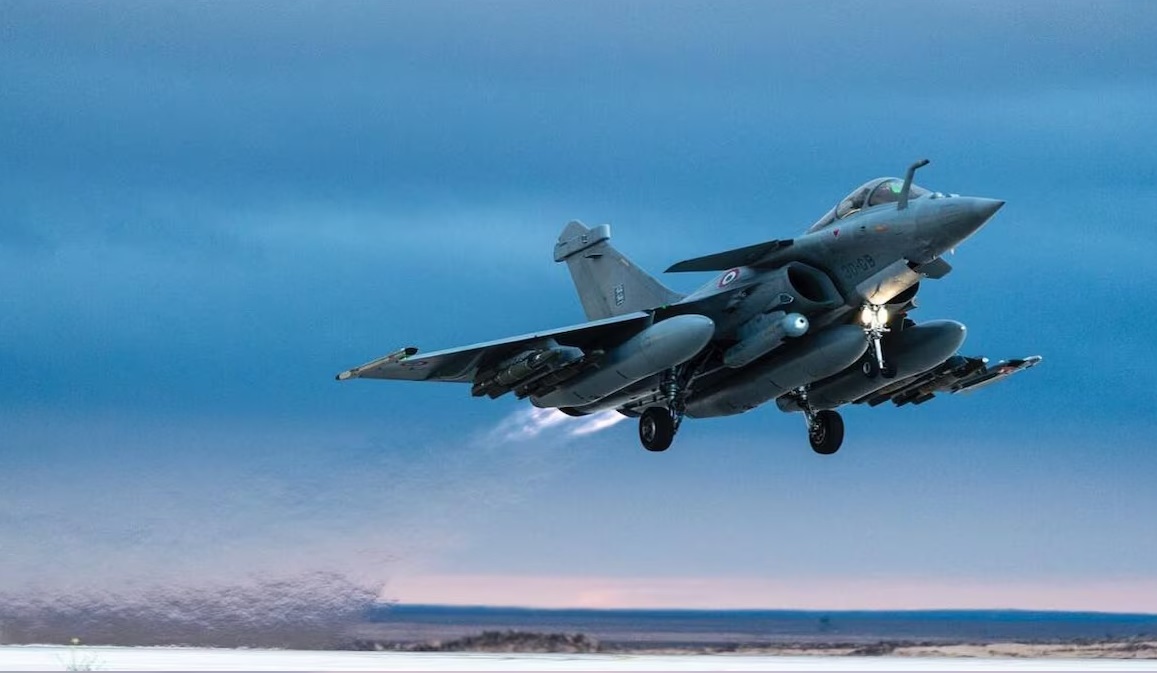World
In a move aimed at reinforcing its defense against growing regional threats, Japan is advancing the development of a new long-range missile designed to counter Chinese military expansion in the Indo-Pacific. The new weapon, named the "New Anti-Ship Missile for the Defence of Remote Islands," is an advanced missile capable of reaching a range of 2,500 kilometers. This extensive range will allow Japan to effectively monitor and potentially engage targets as far as inland China from launch sites in western Japan, marking a strategic enhancement in Japan’s defense readiness.Key Specifications and TechnologyThe new missile is equipped with cutting-edge technology tailored to Japan’s unique geographic and security needs. One standout feature is the Kawasaki Heavy Industries’ KJ300 small fuel-efficient turbofan engine, an innovation that boosts both range and efficiency, ensuring that the missile can travel the full 2,500 kilometers while maintaining accuracy. This engine is designed to support launches from safer standoff positions, allowing Japan to engage potential threats without bringing its forces into enemy range.Beyond its impressive range, the missile incorporates features that make it both harder to detect and more versatile in the field. The design emphasizes a low radar cross-section, enabling it to evade detection by enemy radar systems more effectively than previous models. It’s also highly mobile, a capability crucial to Japan’s Defense Buildup Program aimed at enhancing Japan’s readiness to respond swiftly across different terrains and in various threat environments.Strategic Purpose and Funding AllocationThis missile development project is part of a larger initiative known as Japan’s Defense Buildup Program. The program’s objective is to upgrade Japan’s standoff capabilities, particularly concerning long-range threats, allowing Japan to defend not only its mainland but also more distant, vulnerable territories such as the Nansei/Ryukyu and Senkaku Islands, which lie close to Chinese-controlled areas. The islands are frequently near Chinese military exercises, underscoring Japan's need for a robust defense strategy in this area.To support this, the Japanese government has allocated substantial resources, with approximately $223 million set aside for research and development between fiscal years 2023 and 2027. The timeline for development reflects Japan’s urgency, with the first test launch targeted for fiscal year 2027. While these missiles will not be operational immediately, this proactive approach underscores Japan's intent to be prepared for a range of future scenarios involving regional conflict or escalations in territorial disputes.Technical Advancements and Targeting SystemsBeyond range and mobility, Japan is focusing on advanced targeting technology that will enable the missile to locate and strike moving targets accurately. A critical part of the development process includes integrating real-time data links, ensuring the missile can respond to live battlefield data. These links are essential for engaging fast-moving or evasive targets, like enemy ships or aircraft, and require the integration of satellite or airborne intelligence systems to provide continuous tracking and guidance.Warhead upgrades are also being considered to enhance the missile's capability against hardened structures or fortified installations. This would provide Japan with an additional layer of assurance that its long-range missiles are effective not only against traditional threats but also against reinforced, critical enemy infrastructure.Regional Tensions and International ImplicationsWhile Japan's Defense Buildup Program is a clear response to China’s increasingly assertive stance, especially around contested territories, the missile’s capabilities also raise questions in the international community. Japan maintains that this missile, though offensive in reach, is defensive in purpose. However, the potential for its range to extend deep into another nation’s territory complicates the distinction between offensive and defensive postures, creating the possibility for misunderstandings or misinterpretations on the international stage.Japan’s missile development has prompted discussions about an arms race in the Indo-Pacific, where several nations have been scaling up their defense budgets. The risk of escalation remains, and Japan's strategy will likely need to balance the enhancement of its self-defense capabilities with diplomatic efforts to prevent unintended confrontations in the region. With these developments, Japan is visibly stepping into a stronger defense role that may serve as a deterrent in a region witnessing rapid shifts in military dynamics. By 2027, Japan’s new long-range missile will likely be operational, marking a milestone in its defense strategy and underscoring the country's readiness to address emerging threats within its strategic surroundings. This ambitious project signals Japan’s commitment to securing its territories and maintaining a defensive stance amid a complex and evolving regional security environment.
Read More → Posted on 2024-10-30 16:23:38World
The Aeronautical Development Agency (ADA) is intensifying efforts to bring the Tejas Mk2, also known as the Medium Weight Fighter (MWF), to fruition by recruiting 200 additional engineers. This strategic push signals the project's transition into essential stages of testing, validation, and operational clearance for what is expected to be a game-changer in India’s indigenous defense capabilities.The Tejas Mk2, a next-generation variant of the existing Tejas Mk1A, is being developed to fill the gap between the current light combat aircraft (LCA) and the Advanced Medium Combat Aircraft (AMCA), India’s ambitious future fighter jet project. The Mk2 brings a range of enhanced features, the most significant of which is the more powerful General Electric F414-GE-IN56 engine, boosting the aircraft’s thrust by nearly 30% over the Mk1’s GE F404 engine. This power boost enables the Tejas Mk2 to carry additional weaponry, reach higher speeds, and perform a broader range of missions — including air dominance, ground strikes, and even anti-ship warfare.The aircraft’s design reflects significant upgrades in its payload capacity, avionics, and overall mission versatility. The Mk2’s radar system will feature an Active Electronically Scanned Array (AESA) radar, dramatically improving target detection, tracking, and engagement capabilities. Additionally, the Mk2 will have digital fly-by-wire flight controls and an advanced electronic warfare suite, both of which are vital for achieving air superiority in contested airspaces. ADA’s new engineers will focus on these systems, handling their integration, troubleshooting, and operational testing to ensure peak performance under combat conditions.In addition to handling the advanced avionics and electronic systems, the expanded team of 200 engineers will address several critical aspects of aircraft design and testing. The recruits will be skilled in areas like aerodynamics, structural engineering, systems integration, and avionics, ensuring each aspect of the Tejas Mk2 meets stringent performance and safety requirements. These engineers will work closely with Hindustan Aeronautics Limited (HAL), ADA’s manufacturing partner, to streamline production protocols and create a clear pathway from development to frontline service.ADA and HAL’s collaborative approach is vital, given the ambitious timeline set for the Tejas Mk2. The aircraft’s first flight is scheduled for 2026, with Initial Operational Clearance (IOC) to follow soon after. Final Operational Clearance (FOC), a milestone that signifies the aircraft’s full combat-readiness, will come after comprehensive testing of its systems, including the integration of various indigenous and foreign weaponry. The inclusion of long-range missiles, precision-guided munitions, and anti-radiation weaponry reflects the Mk2’s multipurpose mission capability and its anticipated role in future conflicts.As India’s defense sector increasingly shifts towards indigenously developed technology, the Tejas Mk2 represents a significant step forward. The project not only reflects technological self-reliance but also serves as a blueprint for subsequent aircraft development, from the AMCA to potential unmanned combat systems. By fortifying the ADA with additional engineers, India is fast-tracking one of its most crucial defense projects, aiming to close the capability gap in its Air Force and bolster its aerial defense strategies.The ongoing recruitment campaign underlines the nation’s commitment to developing an advanced fighter jet, tailored for regional security demands and capable of competing with international fourth- and fifth-generation fighters. With continued progress, the Tejas Mk2 stands as a testament to India's growing aerospace capabilities and dedication to building a strong, self-reliant defense infrastructure.
Read More → Posted on 2024-10-30 16:20:37World
The Pentagon has awarded a $4-million contract to Israeli communications provider Gilat Satellite Networks, tasking them with delivering portable SATCOM (satellite communication) terminals to enhance the Department of Defense’s (DoD) connectivity capabilities. These new terminals will be a critical upgrade, supporting both tactical and strategic needs for the U.S. military by providing secure, reliable communication even in challenging environments. This contract is part of a broader Pentagon initiative to strengthen SATCOM infrastructure, as seen with recent contracts involving companies like L3Harris, Curtiss-Wright, and the Swedish firm Ovzon, aimed at expanding high-performance communication capabilities for various military branches.The DKET 3421 SATCOM TerminalThe core of this contract centers on Gilat’s DKET 3421 SATCOM terminal, an advanced piece of technology developed by DataPath, Gilat’s U.S.-based subsidiary. Known for its ability to switch seamlessly between military and commercial network coverage, the DKET 3421 is designed for maximum versatility and high-speed deployment. It weighs about 5,000 pounds (approximately 2,268 kilograms) and is built to withstand high temperatures, deployable in environments reaching over 55 degrees Celsius (131 degrees Fahrenheit), ideal for military operations in desert or tropical conditions.Key Specifications and FeaturesThe DKET 3421 model is tailored for the demanding needs of military operations, featuring multi-band connectivity that allows seamless communication across different frequency bands. This multi-band feature is especially useful for defense applications, as it enables users to access multiple communication networks for added security and flexibility. Here’s a closer look at the unique features:Fiber Optic Linking: The terminal uses fiber optic technology to ensure high-speed data transmission and minimal latency. This is essential for real-time decision-making and precise coordination in mission-critical scenarios.32-Modem Compatibility: The DKET 3421 can support up to 32 modems, making it highly adaptable for diverse mission requirements and suitable for both small and large team deployments. This compatibility allows simultaneous connectivity for multiple users, ensuring reliable, stable internet and communications access for various military branches in field conditions.Rapid Deployment: Despite its size, the terminal can be deployed in less than three hours, enabling rapid setup and operation even in remote or hostile areas. This quick deployment time is a significant advantage in time-sensitive operations, where communication infrastructure often needs to be established swiftly.The Pentagon expects the terminals to be delivered in the first half of 2025. According to DataPath President Nicole Robinson, this contract highlights a strong partnership with the U.S. military and reflects Gilat’s ability to meet the DoD’s rigorous requirements for high-performance, portable network hubs that can keep up with evolving defense communication needs.Broader SATCOM Strategy in the U.S.The Gilat contract is part of a larger Pentagon trend of partnering with various SATCOM providers to ensure secure, portable, and adaptable communication networks for its operations. For instance, earlier this year, the U.S. Department of Defense collaborated with L3Harris to supply its Hawkeye III Lite Very Small Aperture Terminal, known for providing rapid internet connectivity across U.S. Army deployments. The Pentagon also partnered with Swedish SATCOM firm Ovzon, commissioning Ovzon’s proprietary compact SATCOM terminals, which aim to boost portable connectivity options within the DoD.Additionally, in an ongoing effort to streamline expeditionary communication systems, the U.S. Marine Corps partnered with Curtiss-Wright to supply compact network routers and modules that enhance existing satellite systems. These collaborations highlight the Pentagon’s multi-faceted approach to SATCOM, emphasizing compact, portable, and high-speed terminals that meet the distinct needs of each branch while bolstering overall defense infrastructure.With Gilat’s DKET 3421 terminals soon joining the U.S. military’s SATCOM arsenal, the DoD will gain another robust option for reliable, high-performance communications in diverse and extreme environments.
Read More → Posted on 2024-10-30 16:17:36World
The recent Israeli airstrikes that effectively disabled Iran’s S-300 air defense systems have significantly weakened Iran’s military defenses and left critical sites more exposed. The strikes, reportedly targeting around 20 military facilities, including missile and drone manufacturing sites across Iran, were launched by the Israel Defense Forces (IDF) in response to an Iranian missile attack on Israel earlier this month. The impact on Iran’s strategic capabilities is considerable, particularly with the loss of its three remaining S-300 air defense systems. The Russian-made S-300 systems, designed for long-range air defense, were among the most advanced defensive assets in Iran’s arsenal. Known as the S-300PMU-2 Favorit or NATO’s SA-20B Gargoyle, these systems offer robust anti-ballistic capabilities and can engage multiple aerial threats at ranges up to 200 kilometers. Iran received these systems from Russia in 2016, representing a significant modernization of its defenses at the time. But now, with all four Iranian S-300 units—one struck earlier this year and three destroyed this weekend—out of action, Tehran faces an unprecedented vulnerability. The S-300, though introduced by the Soviet Union in the late 1970s and considered an aging system by modern standards, remains effective as part of a layered defense network. In recent years, however, the S-300’s vulnerabilities have been exposed, most notably in the Ukraine conflict. Iran’s inability to effectively counter Israel’s recent air raid raises questions about the resilience of its broader air defense strategy. Israel’s Operation Days of Repentance, involving over 100 fighter jets, met with minimal resistance, as Iran managed to intercept “few if any” of the incoming missiles, according to U.S. and Israeli sources.Reports indicate that among the affected sites were Iran’s Imam Khomeini International Airport, Abadan oil refinery, the Bandar Imam Khomeini energy complex, and critical gas fields such as Tang-eh Bijar. Not only do these sites hold strategic energy assets, but they are also key to Iran’s military and economic infrastructure. According to the Institute for the Study of War (ISW), degrading the defenses around these installations could make them even more vulnerable to future attacks.The IDF’s familiarity with the S-300 has been honed over years of multinational exercises. Israel has used S-300PMU-1 systems in exercises conducted with Greece and even trained with the U.S. on tactics for neutralizing these systems, which likely helped plan and execute Saturday’s operation. Despite Iran’s potential interest in acquiring additional air defense systems from Russia, the ongoing demands of the Ukraine war make any transfer of advanced units, such as the S-400, highly unlikely in the near future. Short of acquiring new S-300 units, Iran could face a long wait before it can restore its air defenses to full strength.The aftermath of the strikes has left Iran scrambling to assess the damage and prepare for potential follow-up attacks. The IDF’s strategic choice to target Iran’s missile and drone production facilities could also hamper Tehran’s support for its regional allies, including Hezbollah and Houthi rebels. Furthermore, the Shahroud missile factory in Iran’s Semnan province, reportedly damaged in the strikes, is a critical site for the production of ballistic missiles. Disrupting production at these facilities impacts not only Iran’s defense strategy but also its supply capabilities for its regional proxies. While Israel has refrained from targeting Iran’s nuclear facilities for now, experts speculate that the strikes might serve as a warning, signaling Israel’s capacity to hit deeply embedded Iranian infrastructure. Additionally, the possibility of further cyber or non-kinetic attacks on Iran’s air defense network remains on the table. Some analysts believe that any Iranian retaliation could prompt Israel to target even more sensitive military and government sites in Iran. In light of Iran’s current defense posture, the loss of the S-300s represents a serious setback, potentially limiting Tehran’s response options and increasing its reliance on other, possibly outdated, air defense systems. As the regional situation intensifies, the recent developments highlight the ongoing arms race in the Middle East and Israel’s commitment to staying ahead in terms of tactical readiness and defense capabilities.
Read More → Posted on 2024-10-29 17:23:08India
At Swavlamban 2024, an event spotlighting India’s defence innovations, Artemon Aerospace introduced a cutting-edge multi-barrel launch-capable loitering munition designed specifically to enhance the operational reach of the Indian Navy’s P-8I maritime aircraft. This new munition represents a significant leap for India’s naval and aerial defence, promising greater precision, adaptability, and self-reliance in line with the country’s ‘Atmanirbhar Bharat’ defence initiative.Artemon Aerospace, in collaboration with Munitions India Limited (MIL), has engineered this munition to provide Indian forces with a versatile weapon that combines advanced surveillance capabilities with precise strike potential. Sushil Ghule, Director of Artemon Aerospace, emphasized that this indigenous system aims to transform how the Indian Navy approaches both offensive and surveillance missions, using advanced multi-barrel technology to create a powerful deterrent. Ghule stated that Artemon’s ongoing commitment to innovative, reliable aerospace solutions will be instrumental in bolstering India’s defence arsenal, particularly for the Indian Armed Forces’ maritime wing.Tailored for Maritime Operations: Seamless P-8I IntegrationOne of the defining features of this loitering munition is its compatibility with the sonobuoy tubes of the Indian Navy’s P-8I aircraft, a Boeing-developed maritime patrol and reconnaissance platform. This unique adaptation enables the P-8I to carry up to 120 munitions in a single flight, allowing it to take on a dual role as a surveillance and strike craft. This capacity not only maximizes the operational versatility of the P-8I but also significantly enhances the strategic options available to the Indian Navy in both offensive and defensive scenarios.Dual-Use Surveillance and Strike SystemArtemon Aerospace’s loitering munition doesn’t simply serve as an offensive weapon; it also functions as an intelligence, surveillance, and reconnaissance (ISR) tool. Equipped with a high-resolution Electro-Optical/Infrared (EO/IR) camera suite, the munition can provide real-time data on target locations, movements, and environments. This high-tech surveillance capability allows it to gather and relay critical information, improving mission outcomes by providing both an eye in the sky and the means to take direct action on high-value targets.Swarm and Kamikaze Modes for Strategic FlexibilityThe loitering munition unveiled at Swavlamban 2024 showcases two standout functionalities: swarm mode and kamikaze mode. In swarm mode, multiple munitions can be deployed simultaneously, enabling cooperative target tracking and engagement. This group coordination approach strengthens the munition’s effectiveness in complex, multi-target environments and makes it an excellent tool against fast-moving or evasive targets.In kamikaze mode, each munition is fitted with a warhead ranging between 1 and 1.5 kilograms, giving it the ability to strike targets directly with devastating accuracy. With an operational range of up to 100 kilometers and an endurance of approximately one hour, the munition can travel a considerable distance from the P-8I, providing flexibility for varied mission profiles. Additionally, operators have the option to abort the mission mid-flight, which enhances adaptability in evolving tactical scenarios.Lightweight, Stealthy, and Hard to DetectCrafted from carbon fiber, the loitering munition boasts a lightweight, durable construction that offers both endurance and resilience. This material choice not only contributes to longer flight times but also reduces the munition’s radar cross-section, making it more challenging for adversaries to detect and intercept. Its low observability and portability make it ideal for high-threat environments, where stealth and agility are paramount.A New Era of Naval Strike and SurveillanceArtemon’s multi-barrel launch-capable loitering munition stands as a groundbreaking addition to the Indian Navy’s operational toolkit, combining ISR, precision strike, and multi-target engagement capabilities in a single, robust package. The munition’s introduction is not only a testament to India’s growing technological prowess but also marks an important step towards self-reliance in defence manufacturing. Through partnerships with industry players like MIL, Artemon Aerospace is helping position India as a formidable force in the modern defence landscape, making it well-equipped to meet the challenges of maritime security and beyond.
Read More → Posted on 2024-10-29 17:13:12World
German space technology firm OHB System AG has taken on a significant role in advancing Earth observation through a EUR 280 million contract with the European Space Agency (ESA) for the creation of two innovative Earth observation satellites. The satellites, part of ESA’s “Earth Explorer 10” Harmony mission, are set to provide unprecedented insights into key environmental systems such as ocean circulation, ice dynamics, and land surface deformation. This mission falls under ESA’s FutureEO programme, which aims to enrich scientific understanding of climate change impacts and broader Earth systems through high-resolution data collection.The contract, signed at the International Astronautical Congress in Milan by ESA’s Director of Earth Observations Programmes Simonetta Cheli and OHB System AG’s Board Member Rüdiger Schönfeld, designates OHB as the prime contractor, leading a consortium of 45 companies across 15 ESA member states. This group, featuring partners like Thales Alenia Space Italia and Canada’s ABB, is tasked with building and integrating sophisticated instruments for the mission.Harmony Mission Overview and Satellite SpecificationsThe Harmony mission brings a new level of observational capability to Earth system science. Set for a 2029 launch, the satellites will be launched into orbit approximately 693 kilometers above Earth, flying in tandem with ESA’s existing Sentinel-1D satellite from the Copernicus programme. This collaboration is strategic: the Harmony satellites will leverage radar signals from Sentinel-1D to collect synchronized data. By operating in conjunction, the three-satellite system will deliver highly detailed views of changes within the Earth's atmosphere, oceans, and land.Each Harmony satellite features a unique combination of instruments: a passive synthetic aperture radar (SAR) and a thermal infrared (TIR) camera. The SAR payload, provided by Thales Alenia Space Italia, will capture high-resolution images of Earth's surface in real time. Meanwhile, the TIR instrument from ABB will detect subtle changes in temperature, offering essential data on thermal energy exchanges between land, oceans, and the atmosphere. This dual-payload setup presents technical challenges and represents a first for OHB, pushing the boundaries of current Earth observation technology.Scientific and Environmental Impact of Harmony DataThe data collected by Harmony is expected to transform our understanding of multiple Earth processes. With SAR providing imaging capabilities and TIR capturing temperature dynamics, scientists will gain detailed insights into the interactions between ocean currents and atmospheric conditions, the behavior of sea ice and glaciers, and even tectonic and volcanic activity. Such data will be crucial for understanding and forecasting sea-level changes, tracking land deformation due to tectonic shifts, and monitoring potential natural hazards.Harmony’s high-resolution observations will also support climate models, improving our capacity to predict and mitigate the impacts of climate change. The mission will benefit various sectors, such as crisis response, land and resource management, and marine ecosystem conservation, by delivering real-time data that can help authorities make informed decisions on environmental protection and sustainable resource use.Building an International Consortium for InnovationLeading this ambitious mission, OHB System AG oversees a diverse industrial consortium, including 45 companies across Europe and beyond, with more partners expected to join as development progresses. This collaborative approach ensures the mission’s success by pooling expertise from a wide array of aerospace, environmental science, and engineering specialists. For example, Thales Alenia Space Italia’s SAR capabilities and ABB’s TIR instrumentation add unique strengths to the satellites, allowing for high accuracy in observing climate-driven changes across vast and remote areas.Simonetta Cheli of ESA highlighted Harmony’s role in filling critical knowledge gaps, saying the data will bridge “current knowledge gaps in Earth system science,” while OHB’s Schönfeld emphasized the mission’s importance and complexity, remarking on the groundbreaking combination of SAR and TIR instruments as a step forward in Earth observation.Looking Ahead: A Mission for Global Understanding and Climate ActionWith Harmony, ESA and OHB are set to advance Earth observation science on an unprecedented scale, offering a new lens through which to view our planet's changing environment. By collecting valuable data on climate and environmental changes, the mission aims to address urgent global challenges. As OHB and its partners progress toward the 2029 launch, Harmony remains a symbol of scientific innovation, international cooperation, and a commitment to sustaining our planet.
Read More → Posted on 2024-10-29 17:05:57World
The Indian Navy’s Weapons and Electronic Systems Engineering Establishment (WESEE) showcased an innovative new target drone, the LCLE X-61B, at the Swavlamban 2024 exhibition. This unique drone has captured attention due to its design and operational potential, which differ from traditional target drones. While WESEE has not released exhaustive technical data, the LCLE X-61B’s unique specifications and hints of flexibility have sparked excitement and speculation within defense circles.One standout feature of the LCLE X-61B is its landing gear—a rarity for aerial target drones. This addition means that, unlike the conventional catapult-launched target drones that require specialized launch systems, the LCLE X-61B can perform traditional take-offs and landings. This shift in design could open up new deployment options and significantly reduce setup time, as it can be deployed from a wider range of locations with conventional runways. Not only does this enhance its operational flexibility, but it could also bring down logistical costs by minimizing the need for complex infrastructure to support its use.Although the LCLE X-61B is labeled as a target drone, its design hints at additional capabilities. Its avionics and structural customization potential mean that it could handle various mission adaptations, even if it does not have the endurance or payload capacity of high-end UAVs or long-range loitering munitions. These features could see the LCLE X-61B being utilized beyond basic target practice, supporting roles that would enhance training and operational readiness. Some potential applications could include:1. Electronic Warfare Training: The LCLE X-61B might be equipped with electronic warfare systems, allowing it to simulate complex threat environments. For the Indian Navy, such a capability would provide crews with invaluable practice against realistic electronic threats, enhancing their response skills in situations where electronic countermeasures are required.2. Sensor Testing and Calibration: The drone’s adaptable design could make it an ideal platform for sensor testing and calibration exercises. Radar systems, infrared sensors, and other detection equipment could be tested and fine-tuned in controlled scenarios, allowing the Navy to validate and calibrate sensors for real-world accuracy and reliability. This is particularly crucial in maritime settings, where detecting and tracking multiple threat vectors can be challenging.3. ISR (Intelligence, Surveillance, and Reconnaissance) Missions: Although limited in endurance, the LCLE X-61B can potentially be outfitted with lightweight ISR payloads. This would enable it to perform reconnaissance in low-threat environments, providing situational awareness and intelligence over short missions. This adaptability could be an asset in scenarios where a larger, more expensive drone might be impractical or too risky to deploy.At Swavlamban 2024, WESEE’s demonstration of the LCLE X-61B has not only underscored the Navy’s commitment to cutting-edge technology but also emphasized the growing trend of multifunctional systems within military applications. The LCLE X-61B could redefine the role of target drones, pushing them beyond conventional training roles into areas that traditionally required more complex and costly UAVs.
Read More → Posted on 2024-10-29 17:03:05World
In a significant step to fortify US space defense capabilities, the U.S. Space Force is set to deploy a cutting-edge satellite jamming system next year, aimed explicitly at countering Chinese and Russian satellites in the early stages of potential conflicts. Developed by L3Harris Technologies, this electronic warfare system, dubbed "Meadowlands," will give the US an enhanced ability to block adversary satellite communications, a measure critical for modern battlefield scenarios where control over information flow can be decisive.What is Meadowlands?The Meadowlands system represents an advanced iteration of the existing L3Harris Counter Communications System (CCS), which the US has used effectively to interrupt enemy satellite links. The new platform, however, boasts a more powerful set of capabilities designed to disrupt satellite communications more efficiently and on a larger scale. Unlike conventional electronic warfare systems, Meadowlands focuses on temporarily jamming satellite communications without causing permanent damage. This reversible disruption feature allows operators to halt enemy surveillance or target-based communications momentarily and then re-enable them as necessary.Scheduled initially for a 2022 release, Meadowlands has undergone additional development to refine its functionality and ensure its reliability in rapidly changing battle scenarios. The project has received a considerable investment of $124 million from the Department of Defense, a testament to its strategic importance. The upgrades include enhanced power efficiency, reduced physical size, and increased automation, allowing Meadowlands to be deployed quickly and operated in high-stakes situations where maintaining communication dominance is critical.How Meadowlands WorksUnlike satellite jammers used in past decades, which relied on brute-force methods, Meadowlands employs sophisticated ground-based radio frequency (RF) units to jam satellite transmissions from afar. This technique minimizes energy use and limits the system's detectability, making it challenging for adversaries to counter or pinpoint its location. Through automated processes, Meadowlands can adjust jamming frequencies based on the specific satellite it is targeting, further enhancing the system’s stealth capabilities and operational effectiveness.The U.S. Air Force and Space Force are expected to start evaluating Meadowlands between January and March 2025. The assessment will involve the first five out of an anticipated 32 systems and will focus on performance, reliability, and adaptability across different geographic locations. Protecting the Battlefield from AboveCurrently, the U.S. Space Force operates 16 CCS platforms capable of shutting down an adversary’s satellite communication links, some of which are managed by the Air National Guard. Meadowlands builds on this legacy, expanding the scope of operations to directly impact satellites used by adversaries for real-time surveillance and intelligence gathering over US forces on the ground.China and Russia, both with extensive satellite networks, have invested significantly in space capabilities that could threaten the US. China’s BeiDou global navigation satellite system, for example, consists of more than 30 satellites, enabling global positioning and potentially weapon guidance systems, while Russia’s GLONASS network remains an essential component of its defense and intelligence operations. Both nations are also actively exploring satellite-killer missiles designed to disable satellites in low and high Earth orbits. A 2020 US Department of Defense report suggested that China is developing anti-satellite (ASAT) weapons, underscoring the potential threats faced by US assets in space.Strategic SignificanceAs tensions rise between China and Taiwan, and with the ongoing conflict in Ukraine, the Meadowlands jamming system represents a proactive approach to securing communication lines essential for US forces. By jamming satellites, the US can potentially disrupt GPS targeting and intelligence efforts by adversaries, which could be crucial in a high-stakes conflict. Meadowlands offers flexibility in operation, allowing for temporary shutdowns to thwart surveillance attempts while minimizing long-term damage.The upcoming deployment of Meadowlands marks a significant upgrade in the US's space warfare capabilities and reflects an increasing reliance on the Space Force for national security. As the US ramps up its investment in space-based defense, Meadowlands will likely play a pivotal role in future conflicts where control over satellite communications becomes essential for victory.
Read More → Posted on 2024-10-29 16:31:39World
QinetiQ, a global defense technology company, has recently clinched a significant contract with the U.S. Army valued at up to $95 million to supply advanced aerial target systems. This contract, known as Aerial Target Systems (ATS-3), represents QinetiQ’s first major role as a prime contractor in the United States, opening a new chapter in their relationship with the U.S. military. As part of this indefinite-delivery/indefinite-quantity (IDIQ) contract, QinetiQ is set to deliver cutting-edge target solutions that will be integral to the Army’s training and testing programs around the world. The Role of the MQM-185B Banshee Jet 80+At the heart of QinetiQ’s offerings is the MQM-185B Banshee Jet 80+, a highly advanced aerial target system engineered to replicate realistic, modern threats. This unmanned aerial vehicle (UAV) is equipped to simulate a variety of hostile aerial threats, making it an invaluable tool for military exercises. Capable of high-speed flight and agile maneuvers, the Banshee Jet 80+ can mimic the performance of enemy aircraft or missiles, challenging soldiers to respond effectively to complex, high-intensity scenarios. Its modular design allows for the integration of various payloads and electronic countermeasure systems, giving training exercises greater realism.The Banshee Jet 80+ is particularly known for its robustness and adaptability in different operational conditions, ensuring it meets the specific demands of each training mission. By providing a versatile platform, QinetiQ allows the U.S. Army to create training environments that mirror real-world combat situations, which is essential for preparing soldiers for modern warfare's unpredictable and rapidly evolving threats.A Step Forward in Aerial Target TechnologyQinetiQ’s role goes beyond simply providing target systems. Under the ATS-3 contract, they will offer extensive operational support, ensuring the targets are deployed and managed with maximum efficiency and reliability. This support includes everything from launching and tracking the aerial targets during exercises to providing maintenance, ensuring the Army can achieve high mission success rates during training.QinetiQ’s Chief Growth Officer, Sam Lewis, noted that the company’s involvement in this contract signals a significant move into the U.S. defense market, allowing QinetiQ to leverage its extensive expertise developed in the UK, Australia, Canada, Germany, and other defense markets. This experience brings advanced engineering solutions to the forefront, allowing QinetiQ to innovate continuously in aerial target technology.Enhanced Reliability and Mission SuccessWith a history of over 30 years in the aerial target sector, QinetiQ has a proven track record, maintaining an impressive 97% mission success rate in the last five years. This consistency in performance highlights the reliability and robustness of their target systems, which are vital for military training exercises where accuracy and dependability are paramount.QinetiQ plans to incorporate advanced systems engineering into their offerings under this contract, focusing on improving autonomy and operational performance. By integrating sophisticated software and autonomous capabilities, QinetiQ’s targets are designed to be more self-reliant and capable of executing complex maneuvers, further enhancing their value in training scenarios. This means the U.S. Army can benefit from aerial targets that offer a realistic training experience while reducing the need for extensive human oversight.Meeting the Evolving Demands of Modern WarfareThe aerial targets provided by QinetiQ are built to address the evolving nature of aerial threats. With modern combat environments requiring more agile and responsive solutions, QinetiQ’s targets can be quickly adapted to reflect changing threat profiles. The company’s engineering teams are working on integrating payloads that simulate everything from radar signatures to electronic warfare measures, pushing the limits of target realism.In this U.S. Army partnership, QinetiQ not only secures a foothold in the American defense market but also sets a new standard for advanced aerial targets designed to train soldiers for the complexities of modern warfare. This contract underscores QinetiQ’s commitment to delivering sophisticated, cost-effective solutions and solidifies its position as a leader in aerial target technology globally. As the U.S. Army prepares for the challenges of contemporary battlefields, QinetiQ’s expertise and cutting-edge solutions promise to play a critical role in enhancing the combat readiness of its forces.
Read More → Posted on 2024-10-29 16:28:32India
The Indian government has imposed multiple penalties on General Electric (GE) due to delays in the delivery of the F404-IN20 engines, a crucial component for the Tejas Mk1A light combat aircraft. The Tejas Mk1A program, led by Hindustan Aeronautics Limited (HAL), is designed to strengthen India’s air defense capabilities and reduce reliance on imported fighter jets. However, setbacks in GE’s engine delivery timeline have disrupted the production and deployment of these aircraft, leading to significant concerns within the Indian Air Force (IAF) and prompting actions by the Indian government.Originally, GE was expected to begin engine deliveries by March 2023. However, supply chain issues and financial challenges faced by a South Korean supplier of critical engine components have pushed this timeline back to March or April 2025. This delay has left the IAF, which has been eagerly awaiting the Tejas Mk1A fleet to modernize its resources, in a challenging position.The delays have reached the highest levels of the Indian government, with both Prime Minister Narendra Modi and Defence Minister Rajnath Singh reportedly addressing the issue in discussions with the U.S. leadership during recent visits. In response, GE has acknowledged these disruptions, attributing them to challenges within its global supply chain rather than any intentional delay. CEO Larry Culp publicly recognized the issues but assured that steps are being taken to rectify the situation.The F404-IN20 engines, specially developed for the Tejas Mk1A, offer advanced capabilities and are essential for the aircraft’s operational performance. These engines are built to enhance speed, maneuverability, and efficiency for the Tejas Mk1A, which already includes upgraded avionics, radar systems, and electronic warfare capabilities. While the exact penalties levied on GE remain undisclosed due to ongoing contractual negotiations, insiders confirm that the contract stipulates fines for each phase of delay. The imposition of these penalties underscores India’s commitment to holding GE accountable for timely deliveries, especially given the strategic importance of the Tejas program.Despite GE’s delays, HAL has assured that its production facilities are ready. The company recently established a new assembly line in Nashik with the capacity to produce up to 24 aircraft per year. However, actual production and deployment hinge on GE’s engine delivery. HAL recently conducted the maiden flight of the first Tejas Mk1A aircraft in March 2024, albeit using older “Category B” engines. These older engines are a temporary solution until the arrival of the F404-IN20 units, essential for the full operational capability of the Mk1A.The delay poses additional challenges for India’s defense strategy, as the country pushes to reduce its dependency on foreign suppliers for critical defense assets. With China and Pakistan as close and active adversaries, India is working to build its domestic manufacturing capabilities to avoid potential supply-chain risks in critical situations. This move aligns with Prime Minister Modi’s “Atmanirbhar Bharat” (Self-Reliant India) initiative, emphasizing domestic production in key areas, including defense. India’s defense partnerships are also diversifying. Historically reliant on Russia, India has increasingly turned to Western nations, including the U.S., for advanced defense technology. The delays from GE, however, underscore the complexities of managing such partnerships in a globalized defense industry, where delays or disruptions in one part of the supply chain can impact entire projects.Looking forward, the IAF is hopeful that GE will meet the revised timeline and that India can soon begin to realize the full potential of the Tejas Mk1A program. With the new April 2025 target, both HAL and the IAF await the arrival of the F404 engines to proceed with final testing and deployment, marking a critical step in India’s pursuit of defense modernization and self-reliance.
Read More → Posted on 2024-10-29 16:24:58India
The Indian Army has embarked on a landmark acquisition journey to secure a new generation of artillery guns aimed at reinforcing its firepower and agility across diverse terrains. At the heart of this project, valued at around ₹7,000 crore, lies a clear mandate: to acquire 400 state-of-the-art howitzers that not only enhance range and accuracy but also align with India's “Make in India” initiative by sourcing them domestically.Strengthening India’s Artillery with Indigenous TechThe tender calls for the procurement of advanced 155mm/52 calibre towed artillery gun systems (TAGS) built under the Indigenously Designed, Developed, and Manufactured (IDDM) category. These howitzers are set to replace older, less potent 105mm field guns that, though lightweight, lack the enhanced range and firepower needed in modern combat.The move to 155mm calibre offers a standardization that boosts lethality, accuracy, and flexibility for the Army. The shift to a larger calibre, combined with a weight limit of 15,000 kg, makes these artillery pieces lighter and more suitable for rapid deployment, especially in challenging, high-altitude areas along the Line of Actual Control (LAC) with China.Key Features and Technological AdvancementsThe Army’s new artillery systems promise an impressive firing range of up to 40 km, making them capable of reaching distant targets with enhanced precision. Advanced technological integrations include automated sighting and ammunition handling, a first for many artillery systems within the Indian Army, which will help reduce response times and improve accuracy. This shift towards automated systems enables these howitzers to be operated with a higher level of efficiency, allowing troops to quickly adapt to dynamic combat situations.The Army has placed a high priority on mobility, given the variable terrain of the Indian border regions. The emphasis on a lighter, more adaptable artillery system is a strategic move to ensure easy transport and faster deployment.Diverse Ammunition Types for Varied Combat ScenariosThe new howitzers are designed to handle an array of specialized ammunition types, providing the Army with increased versatility on the battlefield.High Explosive (HE) Shells: These include standard HE shells for fragmentation effects against personnel and light fortifications. Extended Range HE shells, equipped with Base Bleed (BB) technology, are another addition, enhancing range without compromising on blast impact.Terminally Guided Munitions (TGM): Featuring precision guidance systems, these shells can hit targets with a Circular Error Probable (CEP) of approximately 10 meters. This precision allows for effective targeting even in complex terrain, crucial for India’s diverse geographical challenges.Smart Artillery Shells: In collaboration with IIT-Madras, these shells are being designed with advanced navigation systems leveraging India’s NavIC satellite constellation. Capable of multiple detonation modes, they offer significantly improved targeting accuracy and can adapt to various combat situations.Smoke and Illumination Rounds: Smoke rounds generate multispectral cover, masking troop movements and hindering enemy visibility. Illumination rounds provide light in dark or low-visibility conditions, facilitating night-time operations.Anti-Structure Ammunition: Specialized HE shells designed for penetration allow these guns to dismantle fortified structures, an advantage in scenarios requiring significant firepower against strongholds.Indian Defence Industry Set to Compete for the ContractSeveral prominent Indian defence firms are expected to participate in this bid, including Bharat Forge, Larsen & Toubro, Adani Defence & Aerospace, and the Ordnance Factory Board. Each of these companies has prior experience in artillery projects, positioning them well to fulfill the Army’s requirements for cutting-edge, indigenously produced artillery systems. This contract, however, goes beyond mere production; it is also a strategic step toward enhancing the technological capabilities and self-reliance of India’s defence industry.Strategic and Operational AdvantagesThe new artillery systems will be a key upgrade for the Indian Army, especially in high-altitude and challenging terrains. The lighter, more powerful howitzers enable swift positioning and quicker strikes, a necessity along the LAC where rapid response is vital. The new systems’ extended range and diverse ammunition options further ensure that they are not only effective against ground targets but also flexible enough for multi-dimensional combat scenarios, including area denial and target illumination.A Major Step Towards Self-Reliance in DefenceThis artillery procurement drive underlines the Indian Army’s commitment to indigenization and strengthening domestic defence capabilities. By investing in advanced, locally-produced howitzers, the Army not only secures essential technology but also supports India’s defence ecosystem, propelling economic growth and technological advancement. This move is part of a broader plan aimed at achieving full operational modernization by 2042, laying a strong foundation for India’s long-term defence strategy.With enhanced firepower, range, and precision, these advanced artillery systems will bolster the Indian Army’s strategic edge, especially in border regions where tensions are high. The modernization of the Army’s artillery systems thus marks a significant leap towards a stronger, self-reliant India, aligning national security interests with economic and technological growth.
Read More → Posted on 2024-10-29 16:16:24World
At Istanbul’s Saha Expo, Turkish defense company FNSS, in partnership with Indonesia’s state-owned PT Pindad, unveiled the latest conceptual design for their Kaplan Armored Personnel Carrier (APC), a 30-ton-class tracked vehicle set to meet the Indonesian Army’s modern combat needs. The collaboration, which began in 2015, has since yielded multiple innovative military vehicles, including the Kaplan MT medium tank, which Indonesia incorporated into its military operations earlier this year. The Kaplan APC now builds on these foundations with additional features and capabilities tailored to Indonesia’s demanding landscapes and defense requirements. A Next-Generation Design for the BattlefieldWith plans to begin production in 2025, the Kaplan APC brings several enhancements in technology and design. The first production unit will be manufactured in FNSS facilities in Turkey, followed by a second vehicle assembled at PT Pindad’s Indonesian facilities, reflecting the commitment to joint defense development and technology transfer. The APCs are scheduled to enter service in the Indonesian army by late 2026, reinforcing the military's mechanized infantry capabilities.Designed for maximum durability and reliability, the Kaplan APC boasts an advanced suspension system that maximizes traction and stability across rough and unpredictable terrains. This system minimizes vibrations, enhancing the safety and comfort of the crew and passengers. The vehicle can accommodate up to 13 personnel, including the driver, commander, and gunner, making it ideal for rapid troop deployment. With its modular build and open architecture, the Kaplan APC is adaptable for multiple mission profiles, from reconnaissance to command-and-control functions.Superior Protection and SurvivabilityIn response to the increasing threats posed by modern warfare environments, the Kaplan APC is equipped with enhanced ballistic and mine protection systems that shield against small-arms fire, shrapnel, and roadside explosive devices. The vehicle includes optional active protection systems to counter anti-tank missiles and rocket-propelled grenades. Inside, a fire suppression system, climate control, and robust chemical, biological, radiological, and nuclear (CBRN) defenses are built in to ensure crew survivability under severe combat and environmental conditions. These features are crucial for deployment in regions where both tropical climates and complex combat scenarios demand high resilience and adaptability.Power and FirepowerThe Kaplan APC’s flexibility extends to its armament options. It is compatible with various turret systems and can accommodate an array of weaponry, including 30mm and 35mm cannons and anti-tank guided missiles. Its open architecture allows integration with both manned and unmanned turret systems, allowing the Indonesian Army to customize the vehicle for a broad spectrum of tactical applications. Furthermore, the APC can be equipped with mission-critical Battlefield Management and Situational Awareness Systems, which enhance communication and situational analysis during operations.The Kaplan APC also supports multiple configurations beyond troop transport, making it an effective choice for roles such as medical evacuation, combat engineering, and direct or indirect fire support. This versatility strengthens Indonesia’s defense position, giving it a multi-functional vehicle that can adapt to diverse military needs. With plans for production in both Turkey and Indonesia, the Kaplan APC represents a significant step forward in the defense partnership between FNSS and PT Pindad, as well as a strategic enhancement to Indonesia’s military assets. As these next-generation vehicles roll off production lines by 2025 and into Indonesian terrain by 2026, they will mark a new chapter in Southeast Asia’s armored vehicle capabilities, demonstrating the strength of international defense collaborations in achieving modernized, mission-ready military solutions.
Read More → Posted on 2024-10-29 16:11:28India
India’s quest to bolster its air capabilities is set to take a crucial turn as the government explores a streamlined and transparent process for the acquisition of 114 advanced fighter jets for the Indian Air Force (IAF). This significant procurement, designed to boost IAF’s modern fleet, aims to sidestep past controversies surrounding defense deals, notably the high-profile 2016 Rafale purchase. The government now seems keen to adopt an “open tender” method, marking a departure from previous single-vendor deals. By involving multiple vendors, officials are hopeful this approach will be efficient and free from public scrutiny issues, especially given the heightened global demand for fighter jets.Meeting IAF’s Demand for Modern FightersThe IAF has expressed an urgent need for 4.5 generation multi-role fighters, a generation known for their balanced mix of stealth, radar capabilities, and advanced avionics. These aircraft will serve as a critical asset, especially with India’s existing fighter jets, such as the MiG-21, Mirage-2000, and Jaguars, nearing retirement over the next few years. With the phasing out of these aircraft, there’s a pressing need for replacements capable of addressing threats on both India’s western and northern borders. An open tender, according to officials, could satisfy this demand transparently while encouraging multiple vendors to participate and align with India’s defense manufacturing goals under the “Make in India” initiative.A Fresh Start to Avoid “Rafale-like” ControversyIndia’s previous defense purchase, a 36-unit order for Rafale jets in 2016, quickly became contentious, drawing allegations of corruption and sparking public debate on defense procurement. The urgency to acquire fighter jets under that deal led to a government-to-government purchase between India and France. Despite the IAF’s satisfaction with the Rafale jets, the deal’s controversies escalated, ultimately reaching the Supreme Court.This time, sources reveal, the government is committed to a more cautious and transparent approach. By favoring a multi-vendor open tender, India aims to prevent a repeat of the Rafale scenario. This tender process will likely focus on the technical and operational performance of the competing aircraft, allowing IAF to select a model that meets stringent operational requirements while fostering competition and cost-effectiveness.Prospects for a Diverse Fighter FleetWith an open tender, India could potentially attract leading defense manufacturers, including Boeing, Lockheed Martin, Saab, and Russia’s United Aircraft Corporation, in addition to Dassault Aviation, the maker of Rafale. Each of these companies brings a model with unique features and capabilities:Dassault Rafale: Known for its combat-proven capabilities, the Rafale is a 4.5 generation fighter with robust multi-role capabilities, advanced avionics, and compatibility with India’s weapons systems.Boeing F/A-18 Super Hornet: An upgraded 4.5 generation aircraft, the Super Hornet offers twin-engine reliability, powerful radar, and sensor fusion technology, which could suit the IAF’s operational needs, especially for carrier-based operations.Lockheed Martin F-21: A variant of the F-16 specifically configured for India, the F-21 has advanced radar, communication systems, and weapons compatibility, making it a cost-effective option.Saab Gripen E: This Swedish fighter boasts advanced electronic warfare capabilities, low operational costs, and versatility, aligning with India’s requirement for a multi-role, cost-effective option.Timeline, Challenges, and Make in India ProspectsAccording to sources, the government is aware that a final decision must come soon, given IAF’s urgent needs. However, even after a deal is signed, the timeline for manufacturing and deploying these jets may extend beyond 10 years due to the complexities of production and supply chains. For instance, Dassault Aviation has a full order book from global clients, meaning a delay if India opts to expand its Rafale fleet.A pivotal part of the acquisition process will be India’s “Make in India” mandate, which requires foreign vendors to partner with local firms for assembly and manufacturing. This could strengthen India’s defense ecosystem by promoting technology transfer and building a skilled local workforce. Not only does this meet national security needs, but it also boosts the domestic defense industry, making India more self-reliant in critical defense areas.Path Forward: Avoiding Delays and Fostering TransparencyThe potential open tender model offers the IAF flexibility to select a platform that best matches its operational requirements. It also aligns with the government’s commitment to improving defense procurement transparency and efficiency, avoiding delays and the kind of public controversies seen with the Rafale deal. By opening the process to multiple vendors, the government aims to introduce competitive pricing, ensuring a cost-effective solution for taxpayers.In its journey to strengthen the IAF’s fleet with modern 4.5 generation fighters, India’s government hopes to avoid “Rafale-like” controversies by placing emphasis on transparency, competitive procurement, and domestic production. As the country finalizes its strategy, this tender could not only shape the future of the IAF but also serve as a benchmark for future defense procurements in India.
Read More → Posted on 2024-10-29 15:51:41
Israel Allocates $530 Million to Fast-Track 'Iron Beam' Laser Defense System for Enhanced Protection
World
In a bold move to strengthen its air defense, Israel recently announced a $530 million investment to expedite the development of the "Iron Beam" laser defense system, marking a significant advancement in its multi-layered defense network. This innovative system is expected to complement Israel’s well-known Iron Dome, providing a new layer of protection by targeting smaller threats, including drones, rockets, and other projectiles that may bypass traditional interceptors.The Iron Beam project, managed by Israel’s Ministry of Defense, stands out for its cost-effective and sustainable approach to missile defense. Unlike conventional systems, which rely on interceptors with high production and deployment costs, the Iron Beam utilizes directed-energy lasers to neutralize incoming threats. In its statement, Israel’s defense ministry indicated that approximately two billion shekels (around $530 million) would be allocated to the accelerated procurement and development of these laser systems. The investment will see prominent Israeli defense companies Rafael Advanced Defense Systems and Elbit Systems at the forefront of the system’s finalization, aiming to bring the Iron Beam to operational readiness within a year.How Iron Beam Enhances Israel's Air DefenseIsrael’s need for such a laser-based defense is underscored by recent conflicts with Hezbollah, a Lebanon-based militant group that has launched numerous projectiles toward Israel, intensifying threats in support of Hamas in Gaza. Current systems like the Iron Dome have been unable to intercept every incoming projectile, particularly those at close range or traveling at lower altitudes. The Iron Beam's laser-based interception offers a solution to this challenge by swiftly targeting and disabling incoming threats with precision.The Iron Beam also boasts notable advancements in speed and efficiency. Each laser strike costs a fraction of what traditional interceptors require, making it financially sustainable for extended military operations. In contrast, Iron Dome batteries cost thousands of dollars per interceptor, with each launch contributing significantly to operational costs. Laser defense, however, allows for continuous, high-frequency engagements with minimal resource expenditure, a crucial advantage in prolonged engagements.Technical Specifications and OperationThe Iron Beam’s powerful lasers emit concentrated beams of energy capable of reaching speeds far beyond conventional interceptors. This advanced technology targets incoming objects, burning through the projectile's structure or disabling its guidance systems. Tests conducted in 2021 demonstrated the system’s effectiveness, showing the Iron Beam mounted on an aircraft and using its laser to obliterate a drone mid-air. The video, published by Israel’s Ministry of Defense, provided a glimpse into the Iron Beam’s potential, showing the laser setting drones ablaze in mere seconds, a feat that combines speed and accuracy.Engineers at Rafael Advanced Defense Systems have developed Iron Beam with an emphasis on modularity and adaptability, allowing it to be deployed across various platforms, whether mounted on vehicles, aircraft, or ground installations. This adaptability enables Iron Beam to function both independently and as part of Israel’s broader defense apparatus, providing a layer of protection tailored to evolving threats.Collaborative Development and FundingA significant portion of Iron Beam’s advancement comes from Israel’s collaboration with the United States, which provides substantial military aid under agreements supporting shared security interests. Recently, the U.S. allocated $8.7 billion in aid, with $5.2 billion earmarked specifically for air defense enhancements, a portion of which will contribute to advancing Israel’s laser-based defense systems. Elbit Systems, which received a separate $200 million contract, is responsible for refining Iron Beam’s core technology, focusing on increasing its operational range and potency.The Future of Israel’s Air DefenseThe Iron Beam, upon deployment, will join Israel’s existing air defense architecture, known for its layered approach. This includes the Iron Dome, designed for short-range threats; David’s Sling, effective against medium-range threats; and the Arrow missile systems, developed to counter ballistic missile threats. With the addition of Iron Beam, Israel aims to create a seamless defense matrix capable of addressing an array of aerial threats with minimal disruption.Israel’s strategic positioning of Iron Beam underscores its proactive stance on defense, especially as tensions in the region continue to rise. This cutting-edge system reflects a significant leap in missile defense, offering a glimpse into the future where laser-based interception becomes a mainstay in military strategy.
Read More → Posted on 2024-10-29 06:17:21India
Bharat Dynamics Limited (BDL) has officially launched the production of HELINA anti-tank missile launchers for the Indian Army, marking a significant milestone in India's defense self-reliance and modernization efforts. This initial batch, consisting of over 20 launchers, is part of a targeted order that includes seven key components essential to the HELINA system’s operation. The HELINA, a potent, helicopter-launched weapon system, represents a major advancement for India's anti-tank capabilities, giving the Army an effective "fire-and-forget" solution for ground targets.The HELINA Missile System: Technology and CapabilitiesDeveloped by the Defence Research and Development Organisation (DRDO), the HELINA (Helicopter-launched Nag) is a third-generation, fire-and-forget anti-tank guided missile (ATGM). Designed to be launched from rotary-wing platforms like the Dhruv Advanced Light Helicopter, the HELINA is built on the success of the land-launched Nag missile, adapting it for airborne deployment with increased precision and extended reach. The system's advanced imaging infrared (IIR) seeker enables it to lock onto targets prior to launch. This sophisticated seeker mechanism allows HELINA to distinguish and pursue targets even in poor visibility or challenging battlefield environments, such as those with heavy smoke or foliage. This all-weather capability ensures the Indian Army can deploy the system with confidence, regardless of the operational setting.The HELINA’s strike range is estimated to reach up to 7 kilometers, a distance that places it among the most powerful anti-tank systems available for helicopters. At such ranges, the missile can deliver pinpoint accuracy, a crucial feature when engaging armored targets in complex terrains. The missile’s design, featuring a tandem warhead, is especially effective against enemy armor, including vehicles with Explosive Reactive Armor (ERA), which it can penetrate with ease. This lethality, combined with the fire-and-forget targeting ability, enables HELINA-equipped helicopters to engage multiple targets in a single mission, significantly enhancing the Army's combat flexibility.Current Production and Assembly SpecificationsIn its first production phase, BDL is assembling the HELINA launchers at its state-of-the-art manufacturing facility. A key designated vendor is tasked with producing the launcher assembly, ensuring it meets precise technical specifications critical to performance. However, this initial run does not include the gas bottle and cooling system, which are integral to the full functionality of the HELINA system. These elements will be incorporated into future production phases, once the Army has had time to test and assess the initial units' performance.Each launcher is built to withstand the high-stress environments faced by helicopter-mounted systems. This requires precise engineering and stringent quality control throughout the assembly process. The production team’s scope of work involves complex calibration and extensive testing to ensure the launcher units perform as required, including integration testing with the DRDO-developed HELINA missiles.Future Deployment and Strategic ImportanceThe Indian Army’s order for these launchers is an essential first step in a broader vision of outfitting the armed forces with indigenous, high-tech weaponry. After this initial limited production run, a larger-scale manufacturing effort is expected to follow, with the aim of equipping more Army aviation units with HELINA-ready helicopters.The HELINA system, specifically designed for integration with India's indigenous Dhruv helicopters, strengthens India’s military capabilities by allowing armed forces to engage hostile armor quickly and accurately. With its range, precision, and advanced targeting abilities, HELINA is positioned to become a critical component in India’s defense against armored threats.As the production of these missile launchers progresses, BDL and DRDO continue to advance the system’s overall efficiency and reliability. This production marks a step toward a larger, long-term objective to enhance India's defensive self-reliance, reduce dependence on foreign ATGM systems, and provide the Army with cutting-edge tools to meet modern battlefield challenges.
Read More → Posted on 2024-10-29 06:01:49World
In October 2024, the Russian military achieved its most significant monthly advancement in Ukraine since the conflict's early days in March 2022. According to data from the American Institute for the Study of War (ISW), analyzed by AFP, Russian forces captured 478 square kilometers (184.5 square miles) of Ukrainian territory over the month. This expansion in Ukraine’s eastern regions, particularly around Pokrovsk in the Donetsk region, highlights the ongoing challenges faced by the Ukrainian forces as they grapple with increasingly fortified Russian troops.The October figures reveal an uptick in territorial gains compared to the preceding months. In August and September 2024, Russian advances measured 477 and 459 square kilometers, respectively, but October saw a new high. The eastern region of Donetsk accounted for nearly two-thirds of these recent advances, with Russian troops closing in on Pokrovsk from the south and east. Their progress in Donetsk aligns with their broader strategic objectives in eastern Ukraine, where control over critical cities like Pokrovsk would further secure Russia’s hold on the Donbas industrial region.In addition to eastern Ukraine, Russian forces also made strides in the north near Kupiansk, a town with a recent history of strategic exchanges. Initially seized by Russian troops in the early phases of the war, Kupiansk was recaptured by Ukrainian forces in a September 2022 counteroffensive. However, in October 2024, Russian advances in this region included the capture of more than 40 square kilometers (15.4 square miles), once again underscoring the dynamic nature of the frontlines.The cumulative data underscores Russia’s gradual but steady territorial consolidation since the beginning of 2024. Although only 584 square kilometers were captured throughout 2023, Russian forces have already taken more than 2,660 square kilometers (1,027 square miles) this year, an area slightly larger than Moscow itself. As of October 27, 2024, Russia’s total territorial control in Ukraine—alongside the Crimean Peninsula and regions under Moscow-backed separatist control—amounts to approximately 18.2 percent of Ukraine’s pre-2014 boundaries.Russia’s recent advances underscore the challenges faced by the Ukrainian forces. Eastern Ukraine’s terrain and the infrastructure devastation in the Donetsk and Luhansk regions complicate Ukraine’s defense strategy. With many Russian troops and resources concentrated in these areas, Kyiv’s forces are confronting an opponent that has built up defenses and maintains significant firepower and manpower advantages in the contested zones. The current frontline is notably more rigid than during the conflict's initial months. While early 2022 saw fluid battles and rapid shifts as Russian troops moved toward Kyiv, the situation today resembles a grinding stalemate with gradual Russian advances in specific, strategically valuable regions. In recent months, Russian forces have shown renewed momentum in their offensive operations. The data used by AFP and ISW relies on information provided by both Ukrainian and Russian sources and is validated through satellite imagery. This analytical method enables a clearer view of the evolving battlefield, even as information from the ground becomes increasingly challenging to verify due to heightened operational security.As winter approaches, the strategic implications of Russia’s October gains could affect the war's trajectory, making it harder for Ukraine to regain lost territories in the eastern regions. The progress recorded this month is a reminder that, even two years into the conflict, the situation remains unpredictable, with both sides continuing to adapt their strategies on a rapidly evolving battlefield.
Read More → Posted on 2024-10-29 05:58:17India
India’s ambitious project to manufacture C-295 military transport aircraft is moving forward, with the first "Made-in-India" model expected to roll out in September 2026. The project, led by Airbus and Tata Advanced Systems Ltd. (TASL), marks a significant step toward strengthening India’s defense industry and reducing reliance on foreign-made military equipment. By August 2031, the Indian Air Force (IAF) is anticipated to receive all 40 of the C-295s set for production in India. An Historic Facility in VadodaraThe manufacturing of C-295 aircraft will take place in Vadodara, Gujarat, where Prime Minister Narendra Modi laid the foundation stone in October 2022. This facility will serve as India’s first private sector final assembly line for military aircraft, setting a new precedent in India’s aerospace industry. In addition to boosting self-reliance, this facility is expected to create numerous jobs and build a skilled workforce in advanced manufacturing, maintenance, and aircraft assembly.Ahead of its official inauguration, Spanish Prime Minister Pedro Sanchez is scheduled to visit India from October 28-30, 2024. During his trip, he will join PM Modi to inaugurate the Vadodara facility, underscoring India and Spain’s collaborative partnership in defense and technology.The C-295 Contract and TimelineIn 2021, the Ministry of Defence signed a ₹21,935 crore contract with Airbus Defense and Space SA, Spain, for 56 C-295 aircraft. Under the agreement, 16 of these planes will be delivered in flyaway condition directly from Spain. Meanwhile, TASL will manufacture the remaining 40 aircraft domestically under a technology transfer arrangement. This initiative is part of India’s broader strategy to build an indigenous defense ecosystem while maintaining strong alliances with international partners.The Vadodara facility aims to deliver the first Indian-built C-295 by September 2026, and the remaining 39 aircraft will be completed by August 2031. This timeline aligns with India’s goal of gradually replacing the IAF’s aging fleet of Avro-748 planes, which have served for over six decades, with a newer, more versatile fleet.C-295: A Versatile and Robust Tactical Transport AircraftThe C-295 is a medium tactical transport aircraft recognized for its flexibility and suitability in various operational environments. Built with a high-wing design, it can perform challenging missions, including troop transport, medical evacuation, and logistical support, even in rugged and unprepared airstrips. Some of the C-295’s key specifications and features include:Capacity: The C-295 can carry up to 71 troops or 50 paratroopers and transport payloads up to 9,250 kg, making it ideal for rapid deployment scenarios.Range and Endurance: With a range of approximately 2,000 nautical miles, the C-295 can cover substantial distances without refueling, critical for India’s varied geography.Short Takeoff and Landing (STOL): The aircraft’s STOL capability allows it to operate on short and rough runways, even under adverse weather conditions. This adaptability enables the IAF to access hard-to-reach areas, such as remote border regions or mountainous terrain.Advanced Avionics and Self-Protection: Equipped with cutting-edge avionics and optional self-protection systems, the C-295 offers enhanced operational safety. Its defensive aids include radar warning receivers, missile approach warning systems, and countermeasure dispensers, which boost survivability in hostile environments.This makes the C-295 not only a versatile military asset but also valuable for disaster relief and humanitarian missions.Strengthening India’s Aerospace EcosystemThe Vadodara C-295 facility represents a pivotal move in India’s drive for “Atmanirbhar Bharat” or “self-reliant India.” This project is more than an acquisition; it is an investment in the nation’s defense manufacturing capabilities. With Airbus transferring technology to TASL, the facility will not only build aircraft but will also establish infrastructure and expertise in aircraft manufacturing. The collaboration will involve over 125 suppliers across India, leading to a ripple effect on the local economy, from parts manufacturing to maintenance services.India’s defense establishment hopes this move will set the stage for more such collaborations and empower local industry players to participate in the global supply chain. By mastering the production and maintenance of advanced military aircraft like the C-295, India stands to gain both strategic autonomy and economic benefits.Strategic Implications and Future ProspectsReplacing the IAF’s outdated Avro-748 fleet with the C-295 provides India with an updated and versatile fleet, crucial for both military and non-military missions. This upgrade will significantly boost India’s ability to mobilize troops, deliver supplies, and provide relief during emergencies.With this large-scale production capability, India may also explore the potential for exporting the C-295 to other countries seeking a reliable, medium-capacity tactical transport. Such prospects could further boost India’s defense export goals while strengthening ties with international allies.As the Vadodara facility gears up for production, the rollout of the first Indian-made C-295 will be a momentous occasion, underscoring India’s growing prowess in advanced defense manufacturing. This initiative not only reflects India’s commitment to bolstering its military capabilities but also its ambition to become a hub for aerospace innovation in the coming years.
Read More → Posted on 2024-10-29 04:09:39World
Rheinmetall’s expansion into Ukraine marks a significant shift in both the defense and production landscape for the country. Known for its robust combat technology, the German defense giant has set up its first factory on Ukrainian soil, with a second facility nearing completion. This development means more than just manufacturing; it’s a strategic move designed to reinforce Ukraine’s military infrastructure amid ongoing challenges. Rheinmetall’s CEO, Armin Papperger, shared these updates in an interview with TSN, affirming the company’s commitment to supporting Ukraine’s defense industry with cutting-edge technology and local production capability.The Lynx Infantry Fighting Vehicle (IFV) is at the center of this venture. First introduced in 2016, this vehicle has gained a reputation for durability, adaptability, and superior protection. With production now localized in Ukraine, Rheinmetall aims to deliver the first batch of Lynx IFVs by the end of the year. Additionally, the company is considering further expansion to include munitions production and a specialized facility for gunpowder manufacturing, enhancing Ukraine’s self-sufficiency in defense equipment.The Lynx: A Modular Powerhouse in Modern CombatThe Lynx IFV comes in two main configurations, each designed for different operational needs. The lighter KF31 model weighs around 38 tons, powered by a 755-horsepower engine that allows it to reach a speed of up to 65 km/h. The larger KF41 model, on the other hand, is more robust at 50 tons with a powerful 1,140-horsepower engine, reaching speeds up to 70 km/h. Both models are equipped with modular components, meaning they can be configured for various missions and roles, from frontline combat to reconnaissance and support operations.The design of the Lynx prioritizes flexibility without compromising protection. Its armor is crafted from ballistic steel and reinforced with a dual-hull system, effectively absorbing the impact of blasts. The Lynx’s armor can withstand armor-piercing rounds up to 25 mm in diameter at distances of 500 meters, and its advanced hull design is built to withstand explosions equivalent to 10 kg of TNT. These protection levels can be further enhanced with modular add-ons, including ceramic plates and an optional Active Protection System (APS) to counteract anti-tank threats.Engineered for Crew SafetyOne of the standout aspects of the Lynx IFV is its emphasis on crew safety. The design thoughtfully separates the ammunition storage from the crew compartment, reducing the risk to personnel if the vehicle’s armor is breached. The cabin’s layout ensures that any damaged section doesn’t compromise the safety of the entire crew, allowing troops to operate with added assurance in hazardous environments. The spacious cabin also accommodates additional equipment, giving the Lynx an advantage in versatility and functionality on the battlefield.Strategic Impact of Local ProductionThe significance of Rheinmetall’s production facilities in Ukraine extends beyond the immediate delivery of the Lynx IFV. By setting up manufacturing close to where the vehicles will be deployed, Rheinmetall is helping Ukraine maintain and repair its own fleet more effectively. The reduction in supply chain dependency not only accelerates delivery times but also strengthens Ukraine’s ability to manage and deploy essential defense equipment on its own terms.With plans to extend their facilities to munitions and gunpowder production, Rheinmetall’s investment also speaks to a broader commitment: building a sustainable defense production ecosystem within Ukraine. This localization is poised to benefit Ukraine’s military readiness, ensuring that essential equipment is always within reach.The production of Lynx IFVs in Ukraine symbolizes a new chapter in the country's defense capabilities. As Rheinmetall continues its strategic expansion, it is likely that Ukraine’s military will gain even greater operational flexibility, autonomy, and resilience against potential future threats.
Read More → Posted on 2024-10-27 17:23:40World
In recent days, Russian social media has seen video footage of armored vehicles reportedly delivered to Russian forces, drawing considerable attention. This development, confirmed by prominent military blogger Voennyi Osvedomitel, suggests a new batch of Streit Group-manufactured vehicles may now be operational within Russia's military ranks. Osvedomitel notes that these vehicles could have originated either from the UAE or South Africa, two prominent bases for the Streit Group’s manufacturing.A Closer Look at the Vehicles in QuestionThe video showcases over 20 armored vehicles, revealing that the Streit Group’s Spartan SUT, Cobra, and Cougar models appear to be in use. These vehicles, based on the sturdy Toyota Land Cruiser and Ford F-550 platforms, are designed for enhanced durability, mobility, and survivability under fire. Streit Group’s Spartan, for example, is a battle-proven vehicle known for its flexibility and multi-role capacity. Built on the Toyota Land Cruiser platform, it’s engineered for combat environments, able to withstand light firearms, small explosives, and even certain roadside IEDs. Meanwhile, the Streit Cobra and Cougar models are built on the Ford F-550 chassis and known for their reinforced structure and adaptability in combat. Both vehicles offer varying levels of armor protection, and the Cougar model, in particular, is outfitted for both personnel transport and equipment deployment. Streit Group has historically showcased these vehicles at major international defense exhibitions, highlighting their versatility and capacity for customization based on mission requirements.Armored Vehicles in a New Geopolitical ContextThe presence of Streit Group vehicles in Russia is significant amid heightened international scrutiny, as global sanctions increasingly restrict Russian access to military-grade imports. This new video sheds light on the possible channels through which Russia continues to acquire advanced military assets. While it remains unclear whether these vehicles were directly sourced from Streit Group or procured through third-party intermediaries, this development marks another example of complex arms transactions circumventing conventional trade routes and restrictions.Notably, Streit Group has a history of collaboration with Russian entities, having partnered with Russia's Military-Industrial Company (VPK) in the past. This partnership led to the creation of the Condor/VPK-Ural armored vehicles, some of which reportedly went to private military forces such as the Wagner Group. These prior engagements with Russian contractors have allowed Streit Group vehicles to be field-tested in various conflict zones, contributing to their reputation for endurance and flexibility.Amid Sanctions, the Arms Market Finds New RoutesThis latest transfer of armored vehicles underscores the fluid nature of the global arms market, even as Russian assets face strict sanctions in light of the ongoing Ukraine conflict. Armored vehicles like these fill critical needs for ground support, mobile protection, and supply transport, allowing Russian forces to maintain resilience despite logistical hurdles. The vehicles' arrival from a UAE-based manufacturer, whether directly or via intermediaries, speaks to the intricate global network that continues to enable arms movements even under regulatory pressures.Streit Group's armored offerings have long been popular in international defense markets, often featuring in stockpiles worldwide, which may offer Russia various avenues to source these assets. Past appearances of Streit’s vehicles at global expos are reminders of how widespread their deployment has become, presenting numerous options for procurement that bypass direct sales. While precise details about this particular shipment remain scarce, the strategic utility of these vehicles for Russian forces remains clear: reliable and robust transportation in a highly volatile landscape.In a broader sense, this scenario reveals how the demand for specialized armored vehicles continues to influence and reshape military strategies, especially for nations facing extensive restrictions. These developments around Streit Group’s armored vehicles underscore the complexity of global arms dynamics as they intersect with shifting political landscapes, revealing how critical mobility and protection remain in the evolving calculus of modern warfare.
Read More → Posted on 2024-10-27 17:11:47World
Japan is advancing a new era in defense technology through Kawasaki Heavy Industries (KHI), which is developing a next-generation surface-to-ship missile (SSM) aimed at fortifying the country’s remote island defense. Set to undergo a prototype launch by 2027, this “New Anti-Ship Missile for the Defense of Remote Islands” will provide Japan’s defense forces with a long-range standoff capability, enabling them to neutralize threats from a safe distance, especially in the East China Sea—a region fraught with escalating tensions over the disputed Senkaku Islands.A Strategic Shift Toward Stand-Off DefenseIn recent years, Japan has recognized the need for advanced, long-range, and highly mobile defense technology to protect its far-flung territories. With a range of approximately 2,500 kilometers, the new KHI missile will be able to target bases well beyond Japan's borders, even reaching inland locations in China if deployed from western Japan. The missile’s purpose aligns with Japan’s recent shift towards counterstrike and standoff capabilities—a response to the increased naval presence and strategic posturing by China near disputed maritime territories.This development fits within Japan’s broader defense initiatives, especially after the Japanese government approved a significant Defense Buildup Program in December 2022. This program earmarked funding for several defense projects focused on modular missile designs, improved radar cross-sections for stealth, and enhanced mobility for rapid deployment.Design and Performance: Inspired by Advanced Western SystemsVisually, the new missile resembles the U.S. Tomahawk, which has set benchmarks globally for its range and precision in cruise missile design. Like the Tomahawk, the Japanese missile prototype shown at the Japan Aerospace show JA2024 features large main wings and a flush-mounted air intake, designed to enhance aerodynamic efficiency and sustain long-distance flights. These elements are instrumental for the missile’s speed, stability, and flight range, which are essential for its role in standoff defense.Underneath its sleek exterior lies a highly efficient small turbofan engine known as the KJ300. This two-spool engine, exclusive to KHI’s new standoff missiles, provides a thrust of 3.58 kN (or roughly 365 kgf) under sea-level conditions. At just under a meter in length, this compact engine is crafted for fuel efficiency, allowing the missile to cover substantial distances while remaining economical. Its power and efficiency make it ideal for missiles intended to operate far beyond standard defense perimeters.KHI's Development Goals and Future Testing PlansKHI’s contract for the project spans five years (2023–2027), supported by the Japanese Ministry of Defense with an investment of ¥33.9 billion ($223 million). This funding will drive the missile’s research, development, and eventual prototype launch. According to Japan’s Acquisition, Technology & Logistics Agency (ATLA), the missile will be fine-tuned to deliver not only increased range and mobility but also low radar cross-section (RCS) to enhance its stealth capabilities—a feature that allows it to evade detection and maintain a tactical advantage against hostile radar systems.Japan’s Ministry of Defense has also allocated additional funds in its 2024 budget for the “New Surface-to-Ship/Surface Precision Guided Missile” project. While related, this missile differs from the KHI's anti-ship missile and is tailored more for high-precision strikes with enhanced surface-to-ship and surface-to-surface versatility. Research from both projects will share technologies, particularly in radar evasion and precision guidance, with the ultimate aim of reducing costs by utilizing common design elements and modular components.Addressing a Rising Threat LandscapeJapan’s strategic investment in these new missile systems reflects a pragmatic response to the evolving threat landscape, especially near its western shores. The Senkaku Islands have been a hotspot of contention, with Chinese naval and paramilitary vessels increasing their presence in contested waters. This missile will support Japan’s ability to deter and respond to potential incursions, providing a credible deterrent while underscoring Japan’s commitment to sovereignty over its islands.With its potent combination of range, precision, and stealth, the new KHI missile aligns with the Japanese government's long-term vision for securing its territorial integrity and augmenting its defensive autonomy in the Asia-Pacific region. The anticipated launch in 2027 will be a crucial milestone, signaling Japan's readiness to protect its borders in an increasingly complex regional security environment.
Read More → Posted on 2024-10-27 17:07:30Search
Top Trending
-
 Agneepath Scheme replaced with Sainik Samman Scheme 2024, Defence Minister Rajnath Singh Relaunched Agniveer Scheme
Agneepath Scheme replaced with Sainik Samman Scheme 2024, Defence Minister Rajnath Singh Relaunched Agniveer Scheme
-
 China's Latest DF-31AG ICBM Test: A Strategic Leap in Global Missile Capabilities
China's Latest DF-31AG ICBM Test: A Strategic Leap in Global Missile Capabilities
-
 Pakistan Announces 15% Increase in Defence Budget for 2024-25 Amid Economic Crisis
Pakistan Announces 15% Increase in Defence Budget for 2024-25 Amid Economic Crisis
-
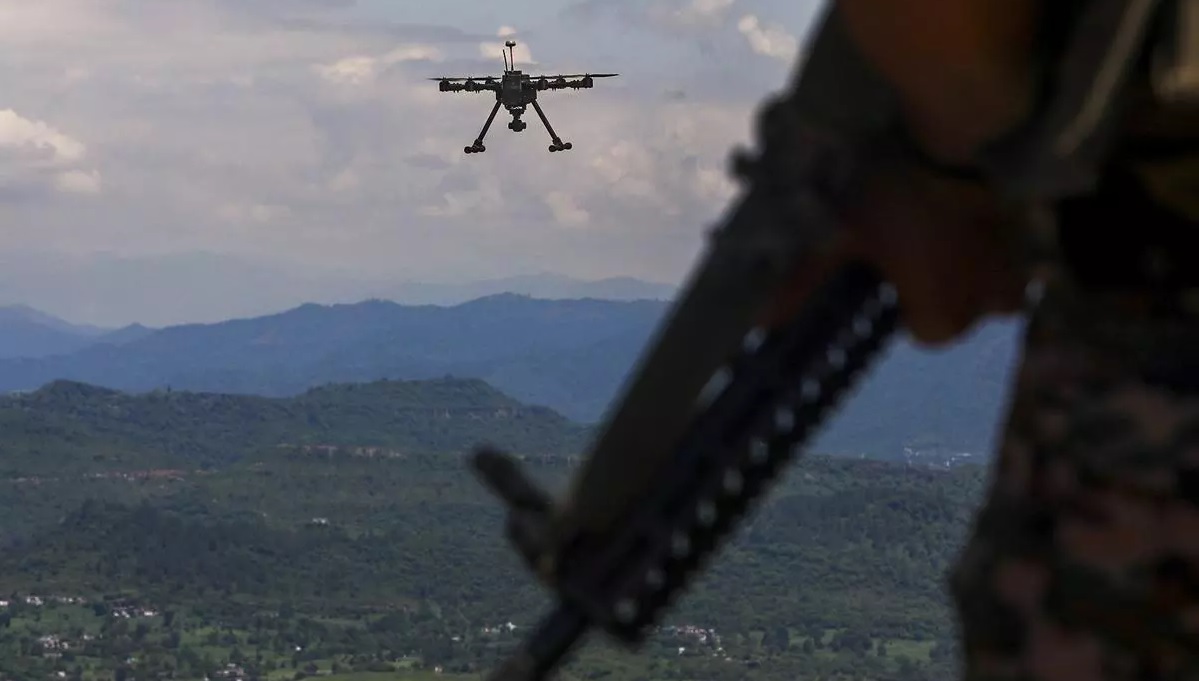 India's Defence Ministry Warns Against Chinese Parts in Military Drones Amid Security Concerns
India's Defence Ministry Warns Against Chinese Parts in Military Drones Amid Security Concerns
-
 China’s Super Radar Detects Mysterious Plasma Bubble Over Giza Pyramids
China’s Super Radar Detects Mysterious Plasma Bubble Over Giza Pyramids
-
 India's Indigenous Kaveri Engine Program with New Focus on Thrust and Performance
India's Indigenous Kaveri Engine Program with New Focus on Thrust and Performance
-
 Isro Draws up Ambitious Plan for 2024, says will Launch at Least 12 Missions
Isro Draws up Ambitious Plan for 2024, says will Launch at Least 12 Missions
-
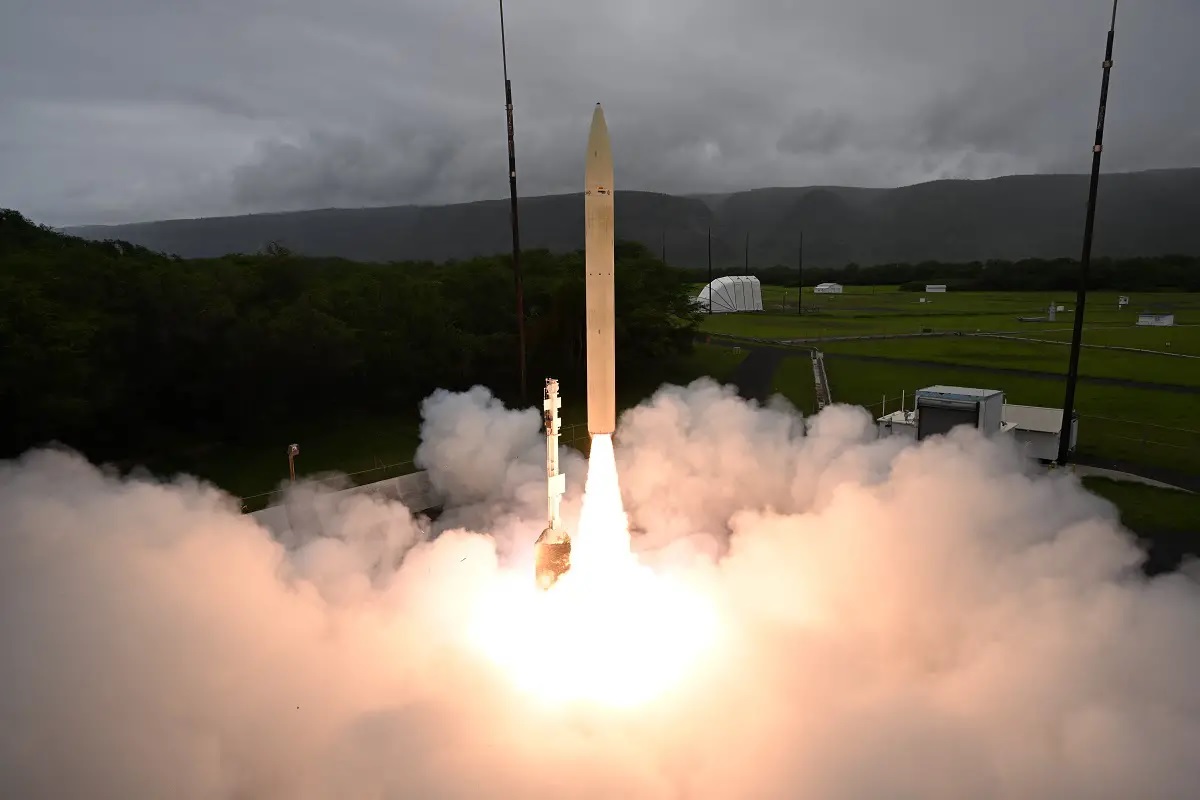 Successful Hypersonic Missile Test by U.S. Department of Defense
Successful Hypersonic Missile Test by U.S. Department of Defense
Top Trending in 4 Days
-
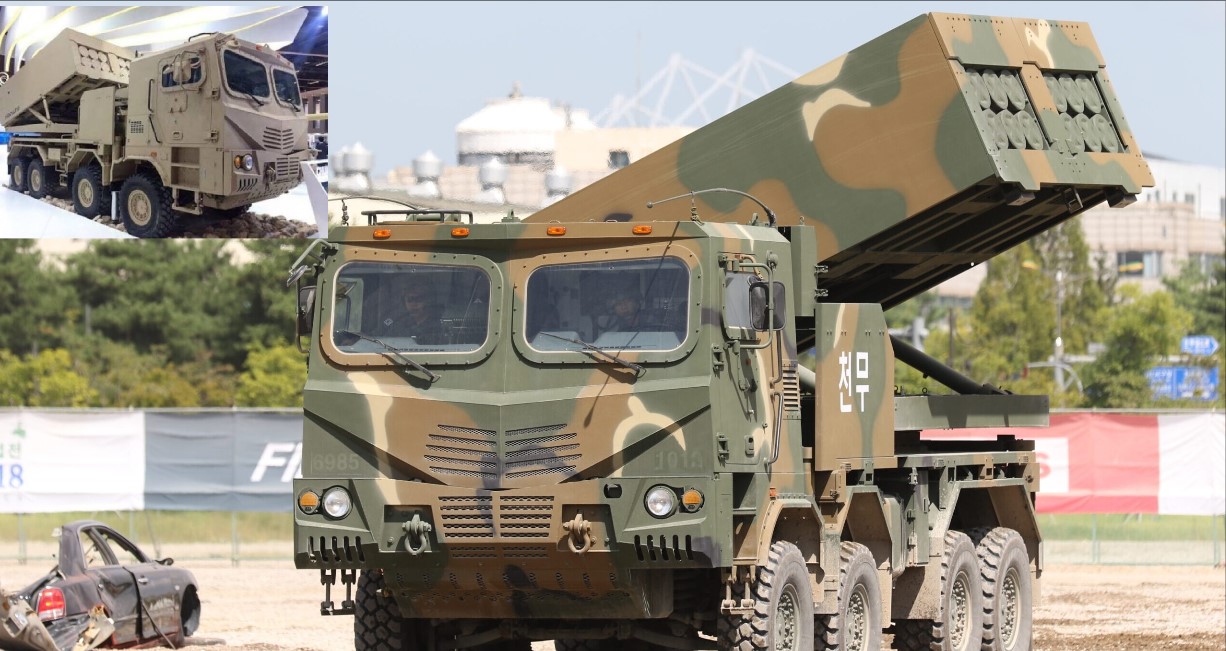 South Korea’s K239 Chunmoo Rocket Artillery Spotted in Saudi Arabia
South Korea’s K239 Chunmoo Rocket Artillery Spotted in Saudi Arabia
-
 Russia Launches Massive Missile and Drone Attacks on Ukraine's infrastructure
Russia Launches Massive Missile and Drone Attacks on Ukraine's infrastructure
-
 Peru to Acquire South Korea's K2 Black Panther Tanks
Peru to Acquire South Korea's K2 Black Panther Tanks
-
 Russia Reports Interception of 44 Ukrainian Drones Including 20 over Novgorod region
Russia Reports Interception of 44 Ukrainian Drones Including 20 over Novgorod region
-
 Advancing Space Tech for Defense: ICEYE Leads Finland's F-35 Industrial Participation Program
Advancing Space Tech for Defense: ICEYE Leads Finland's F-35 Industrial Participation Program
-
 Russia Fires Intercontinental Ballistic Missile at Ukraine
Russia Fires Intercontinental Ballistic Missile at Ukraine
-
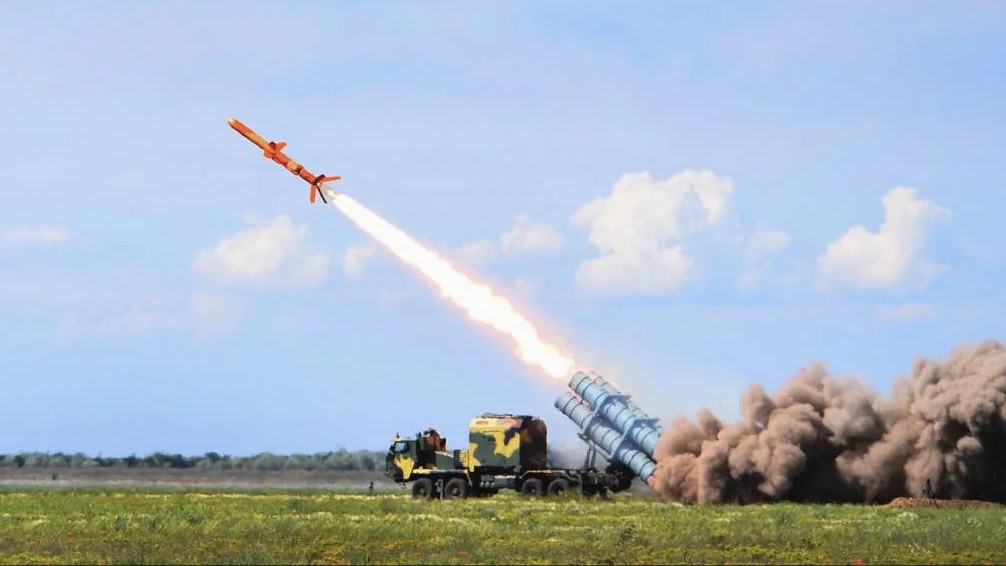 Ukraine Scales Up Neptune Missile Production: Over 100 Units Manufactured with Enhanced Range
Ukraine Scales Up Neptune Missile Production: Over 100 Units Manufactured with Enhanced Range
-
 Taiwan Strengthens Communication Resilience with LEO Satellites, Make War-Proof its communications networks
Taiwan Strengthens Communication Resilience with LEO Satellites, Make War-Proof its communications networks
